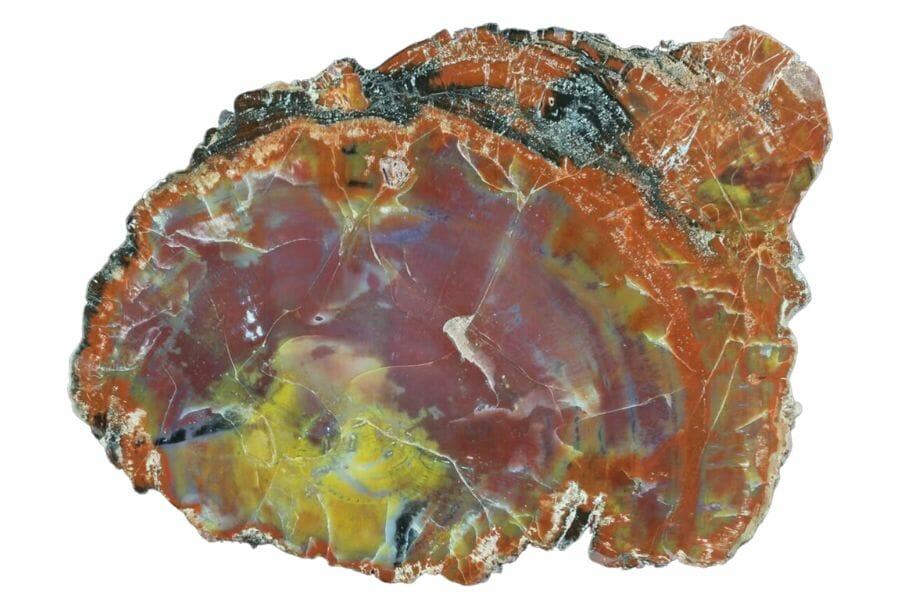Imagine that you’re on a treasure hunt, right in your own backyard! That’s what exploring the rocks, minerals, and gems of Washington State feels like.
From the sparkly quartz to the eye-catching malachite, each rock and mineral tells a fascinating story. And let’s not forget the gems! Washington State is home to dazzling beauties like garnets and opals.
But these rocks and minerals aren’t just cool to look at. They’re also super important for scientists. Geologists study them to learn about how our planet was formed and how it’s changed over time.
The best part is that you don’t have to be a professional geologist to enjoy all this. All you need is a sense of adventure and a love for the world around you.
So, let’s jump in and discover the amazing world of Washington State’s rocks, minerals, and gems!
A List of The Common Rocks, Stones, and Minerals Found in Washington
Let’s go on a journey beneath our feet to discover the world of rocks, minerals, and gems in Washington State! You can check out the guides below for a more in-depth look into what Washington has to offer:
Washington State Rock, Mineral, and Gem
To get started, let’s take a look at the rocks and minerals that represent the state best:
| Washington State Gem | Petrified wood |
Different states have different rules on what you can and cannot do when you go rockhounding. You can visit the Washington State Department of Natural Resources so you can familiarize yourself with the state’s specific guidelines.
Petrified wood
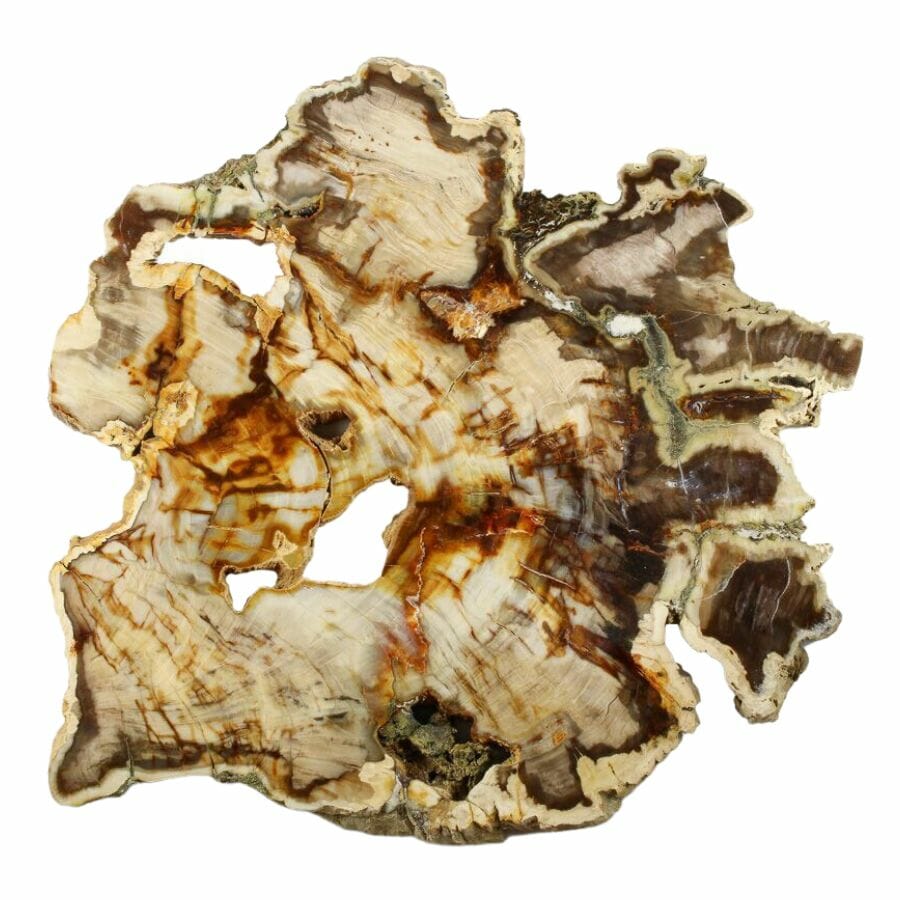
Check this out: a piece of wood that turned into stone! That’s right, it’s petrified wood, and it’s a super cool type of fossil.
Here’s how it happens. When a tree falls in a place that’s wet, like a swamp or a river, it can get quickly covered in mud or sand. Over time, the wood starts to decay, but water filled with minerals seeps in.
These minerals start to fill in the spaces left by the decaying wood, kind of like how a mold works.
Finally, after thousands or even millions of years, you’re left with a rock that looks just like the original piece of wood. It’s a super slow process, but the end result is worth the wait!
Washington State is a real hotspot for petrified wood. In fact, we even have the Ginkgo Petrified Forest State Park here! The trees in these forests lived millions of years ago and the variety is just amazing.
You can find petrified wood from many different types of ancient trees, each with its unique colors and patterns.
Where you can find petrified wood in Washington
Look in these places if you want to come across petrified wood:
- Salmon Creek, Toledo, Lewis County
- Saddle Mountain, Mattawa, Grant County
- Horseshoe Bend, Warwick, Klickitat County
If you want to learn more about petrified wood, we have a comprehensive guide to many more locations here:
Agate
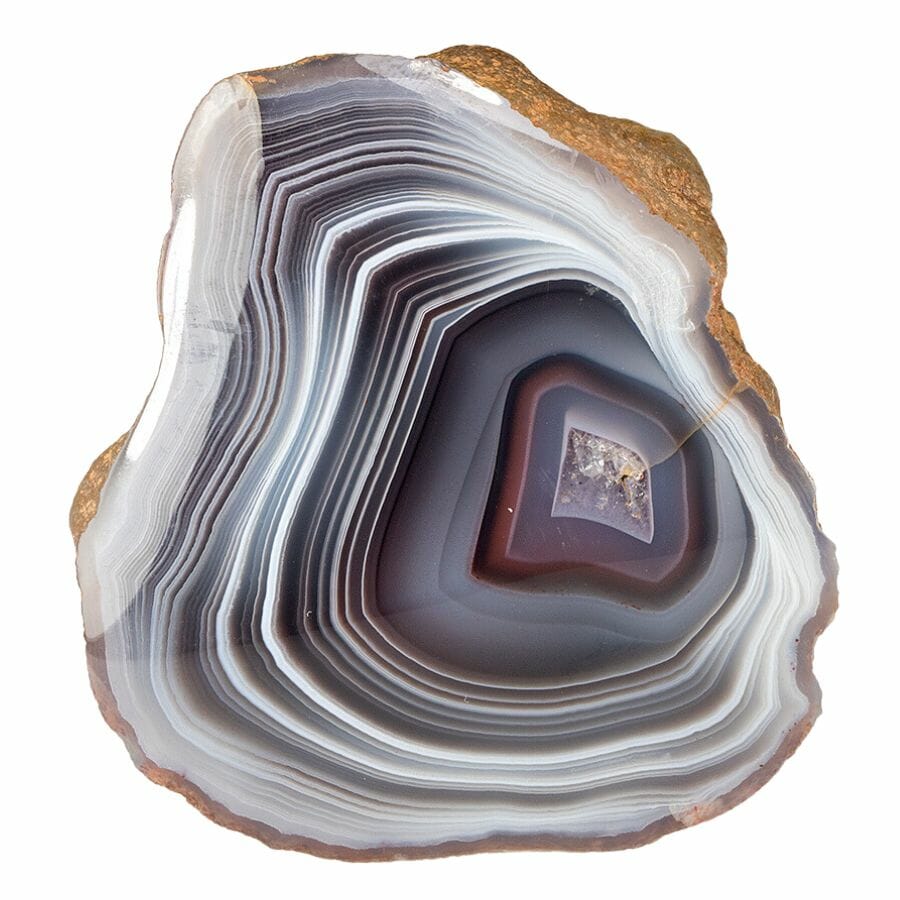
Agate is a really cool rock, and it’s just one of the many types of rocks found in Washington. Picture this: A rock filled with beautiful layers, almost like a cake, but way tougher and much more colorful. That’s an agate!
It’s a type of quartz, but with a twist. It forms when tiny particles of quartz get together in pockets or holes inside other rocks. Over time, layer after layer builds up and voilà, we get a beautiful, striped agate.
Agate’s not just pretty to look at. It’s super useful too. People love using it for jewelry because each piece is unique. No two are ever the same!
It’s also tough, so it can be cut, polished, and shaped into lots of different things, from earrings to paperweights.
Scientists also like agates. The layers inside an agate can tell them about the earth’s past. It’s like a time capsule that takes us on a journey back millions of years. So, agate isn’t just a pretty face, it’s also a key to understanding our world’s history.
Where you can find agate in Washington
There’s a great chance that you’ll find agates if you look in these places:
- Black River Quarry, King County
- Agate Bay, Clallam County
- Crystal Mountain, Liberty, Swauk Mining District
Of course, these aren’t the only spots for agates in Washington. We have a comprehensive guide that can help you in your gem-hunting:
Chalcedony
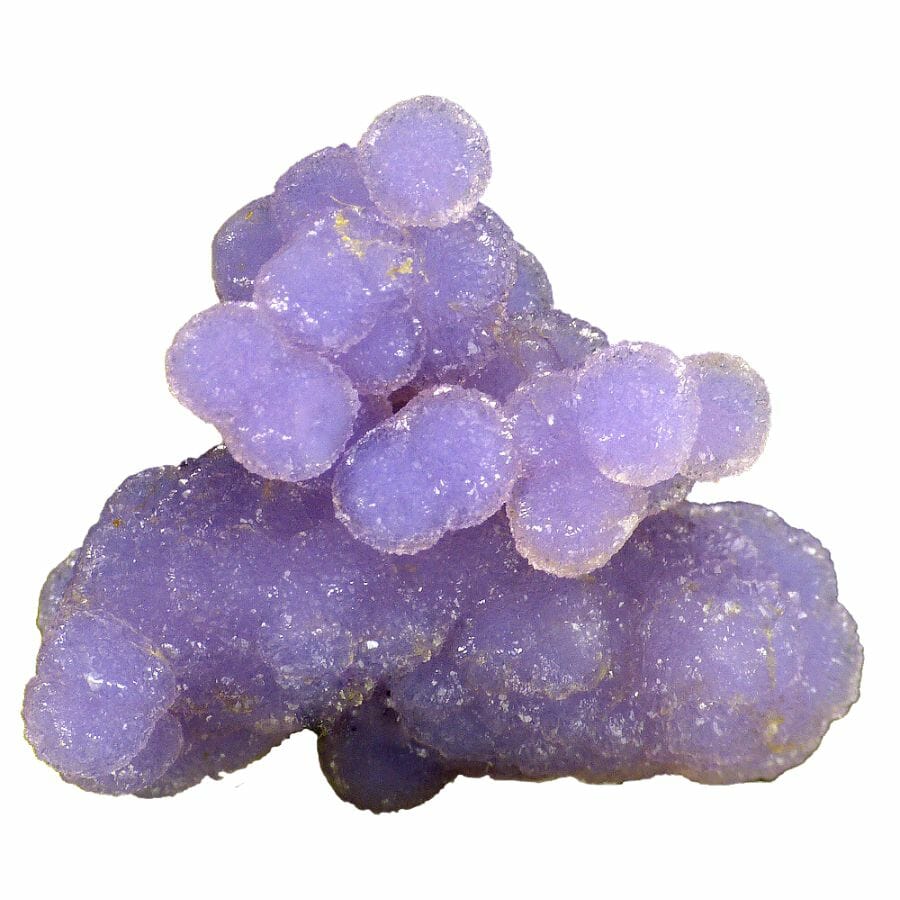
Chalcedony is a type of quartz, which means it’s made from teeny, tiny crystals so small that you can’t see them without a microscope.
It’s formed over a long time in hollow spaces, like inside rocks or in soil, and it often shows up as round blobs or crusts.
Chalcedony can come in many colors, like white, gray, blue, or even pink! In Washington State, you might find blue chalcedony, which can be quite beautiful.
It’s often translucent, which means light can pass through it but not clearly, kind of like a frosted window.
Imagine super-hot water moving through cracks in the Earth’s crust. This water is packed with silica. As the water cools, the silica starts forming crystals. The slower it cools, the tinier the crystals. And voilà! Chalcedony is born.
Not only is chalcedony pretty to look at, but it’s also used to make jewelry and decorations.
Plus, people who study rocks and minerals – like geologists – find chalcedony fascinating because its colors, patterns, and the way it forms can tell us a lot about what was happening in the Earth when it formed.
Where you can find chalcedony in Washington
Check out the spots below if you want to look for chalcedony:
- First Creek, Swauk Mining District
- Cadman Quarry, Monroe, Snohomish County
- Top of the Hill Quarry, Doty Hills
Jasper
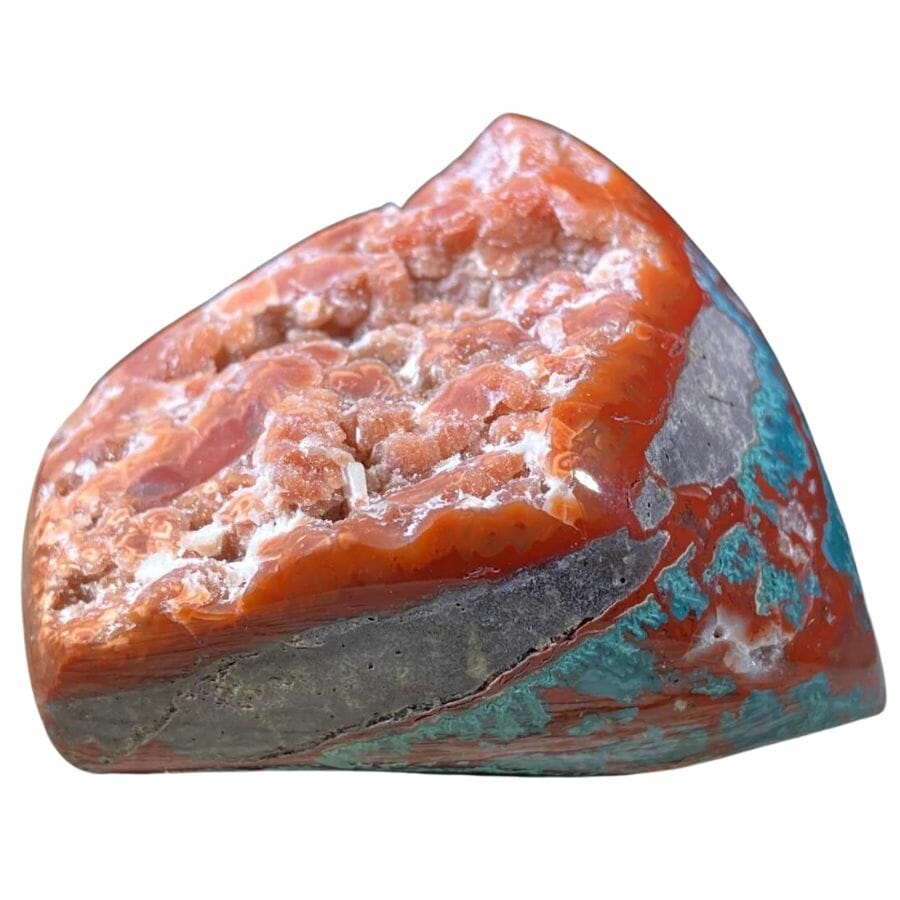
When you think about rocks and minerals found in Washington, jasper is one that definitely stands out. It’s a kind of quartz, but what makes it special is its colorful and often intricate patterns.
From reds to greens, and even blues, jasper showcases a mesmerizing array of hues.
It forms when tiny pieces of quartz and other minerals mix together and get really cozy inside other rocks. Over time, with a good squeeze from the earth and some heat, these pieces stick together to create jasper.
In Washington State, there’s a cool variety of jasper. Picture a jasper that looks like a painting of a desert, with bands of red, yellow, and brown. That’s Picture Jasper!
Then, there’s Ocean Jasper, with circles and dots that look like bubbles or waves. They’re like mini oceans trapped in a rock!
People have always valued jasper. Apart from its dazzling looks, it’s also sturdy, making it perfect for jewelry. Plus, each piece has a unique design, so when you have a jasper gem, you know there’s no other like it in the world.
Where you can find jasper in Washington
You can find jasper in the following places:
- Saddle Mountain, Mattawa
- Ed B. Prospect, Lake Crescent Area
- Van Stone Mine, Colville Mining District
Pyrite
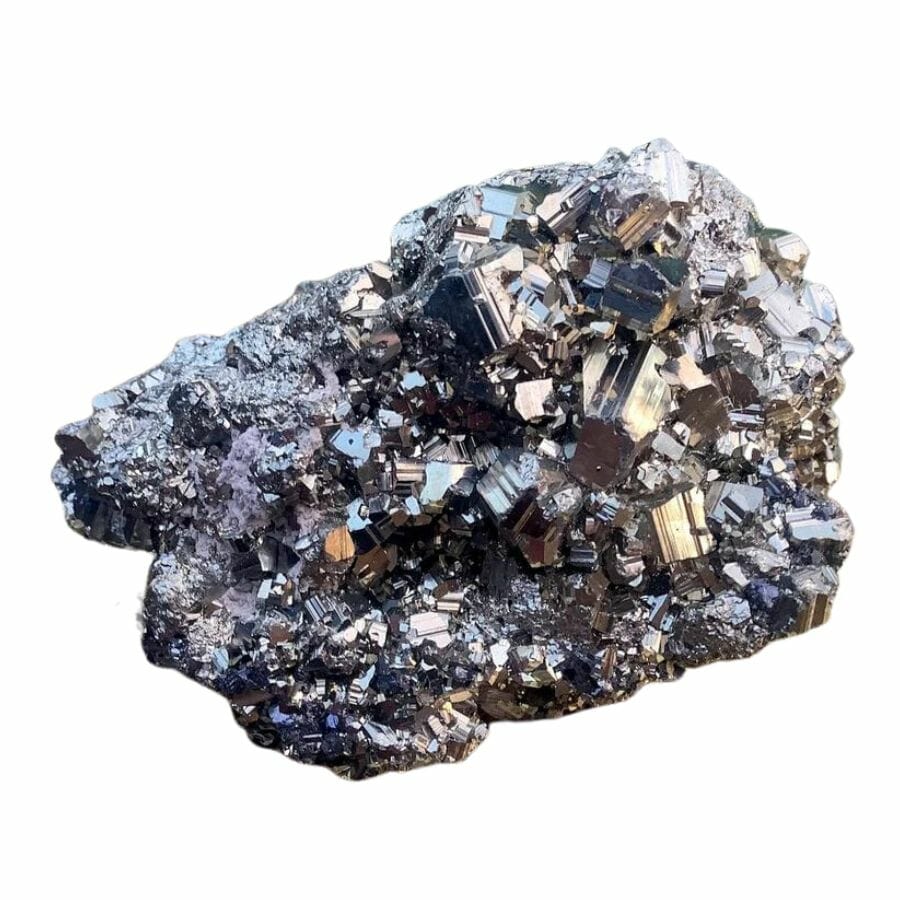
Pyrite is a mineral that really knows how to shine! Often called “Fool’s Gold,” it’s not as valuable as real gold, but it still has its own special sparkle. Pyrite forms when sulfur and iron get together in the earth under just the right conditions.
You’ll probably find pyrite in a couple of different shapes. It can look like little cubes or nuggets, and at first glance, it does look a bit like gold!
Because of its metallic sheen, pyrite can be used in jewelry. However, it’s often mixed with silver because it’s too brittle on its own.
It also has other practical uses. It can be used to make sulfuric acid, which is used in all kinds of industries, from making fertilizers to cleaning metals.
And here’s a fun fact: in the old days, pyrite was used to create sparks. If you struck it against flint, it would spark and could be used to start a fire!
Where you can find pyrite in Washington
Jasper can be found in these areas:
- Silver Hill Mine, Silver Hill
- Cadman Quarry, Monroe
- Weyerhaeuser Lincoln Creek Quarry, Doty Hills
Quartz
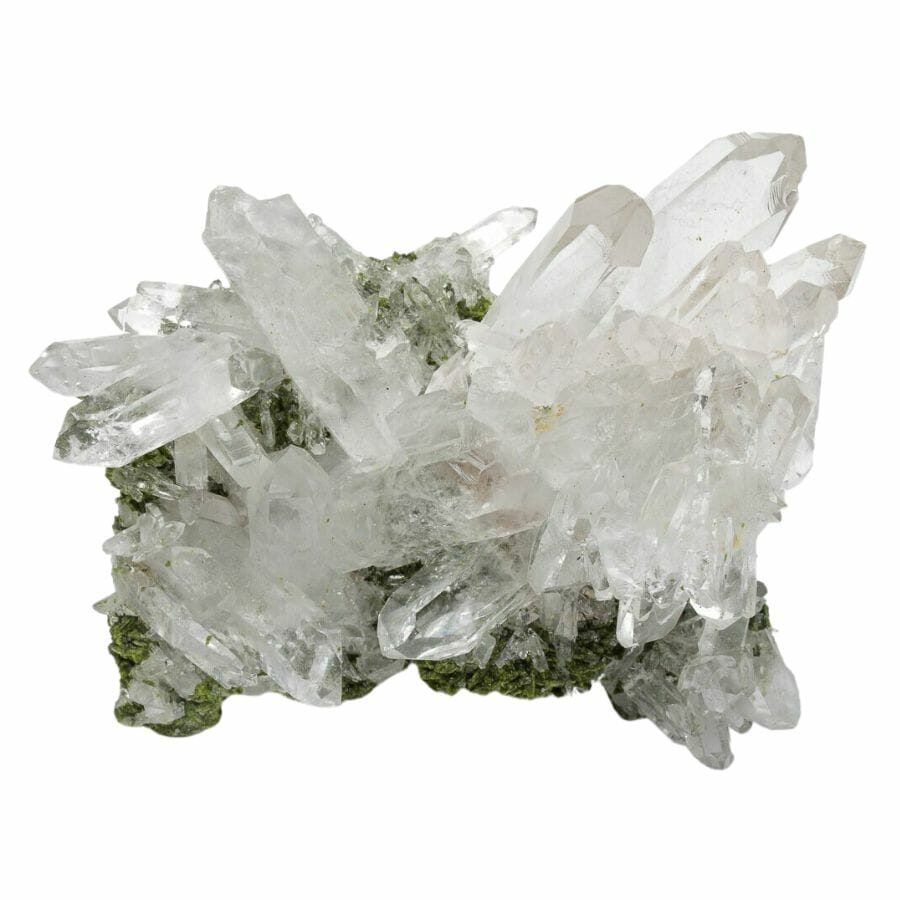
Quartz is like the all-star player in the rock and mineral world. It’s super common, but that doesn’t make it any less awesome. Quartz forms when silicon and oxygen, two of the most abundant elements on Earth, team up.
This can happen in many different environments, like inside volcanic rocks, or when hot, mineral-rich water cools down.
In Washington State, there are a few different kinds of quartz that you might come across. There’s milky quartz, which is white and kind of looks like a cloud trapped in a rock.
Then there’s clear quartz, which you can see right through, just like a piece of glass.
Quartz is beautiful and versatile, and you can use it in a variety of ways. It can be carved and polished into all sorts of shapes for jewelry and home decorations. And since it’s pretty tough, it doesn’t scratch or break easily.
It’s also used in electronics because it can generate electricity when pressure is applied, a feature known as piezoelectricity.
There are a lot of similarities between quartz and calcite, which means that they can be difficult to tell apart at times. This guide can tell you the differences and similarities between the two:
Where you can find quartz in Washington
Explore the spots below to find quartz:
- Hall Creek Basin Prospect, Covada Mining District
- Wildcat Creek Claim, Yakima County
- Lawrence Prospect, Skagit County
Malachite
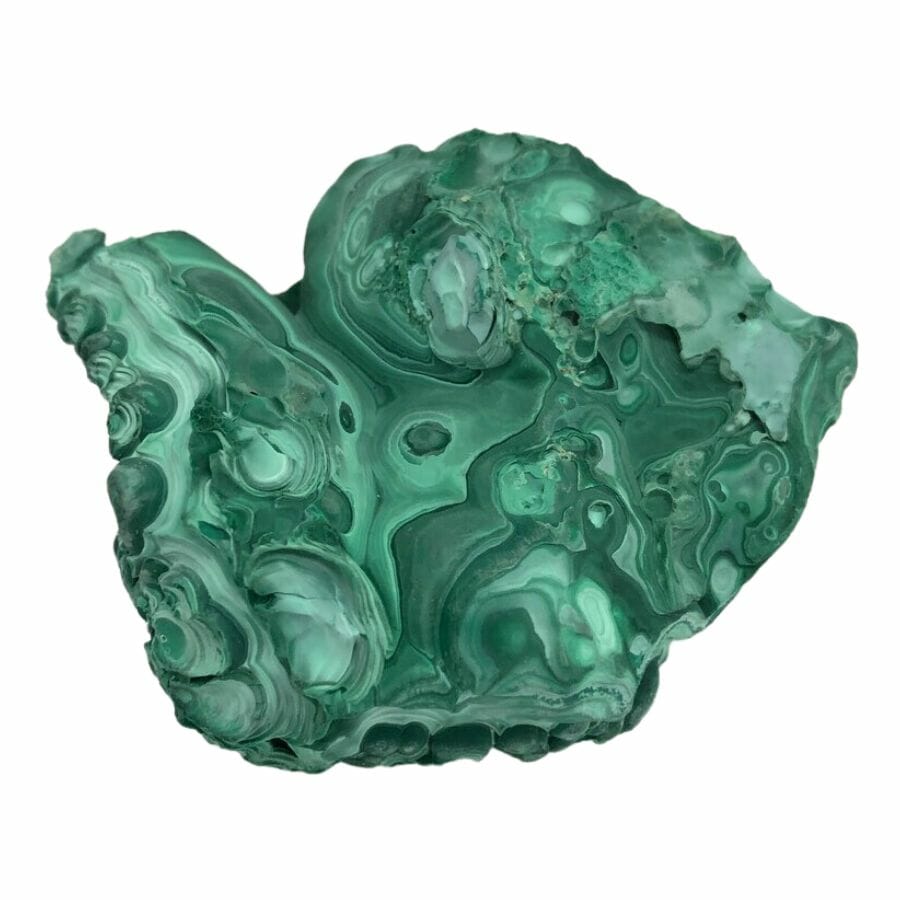
Malachite is a green gem known for its vibrant color and intricate patterns that can remind you of a peacock’s feathers. It’s formed when copper minerals are changed by water and carbon dioxide in the ground.
In Washington State, you can usually find malachite in the form of green crusts or round shapes called “botryoidal” formations. This means that they look a bit like a bunch of grapes.
It’s easy to see why malachite is so popular. For starters, it’s downright beautiful. Its green color and unique patterns make it a favorite for jewelry and ornaments. It can be cut and polished into beautiful shapes that are sure to turn heads!
But malachite isn’t just good-looking. It’s also a valuable clue for finding copper deposits, because remember, it forms from copper minerals. That makes it really interesting to miners and geologists.
Plus, malachite has been used since ancient times for pigments in paint!
Where you can find malachite in Washington
These are the places where you can find malachite:
- Madsen Quarry, Chewelah Mining District
- Johnsburg Mine, Cascade River, Cascade Mining District
- Margaret Mine, Goat Mountain
The Gemstones Found in Washington
Here’s a detailed guide to help you explore the secrets of Washington’s gemstones. We can also help you map out your next adventure with the help of this detailed article:
Azurite
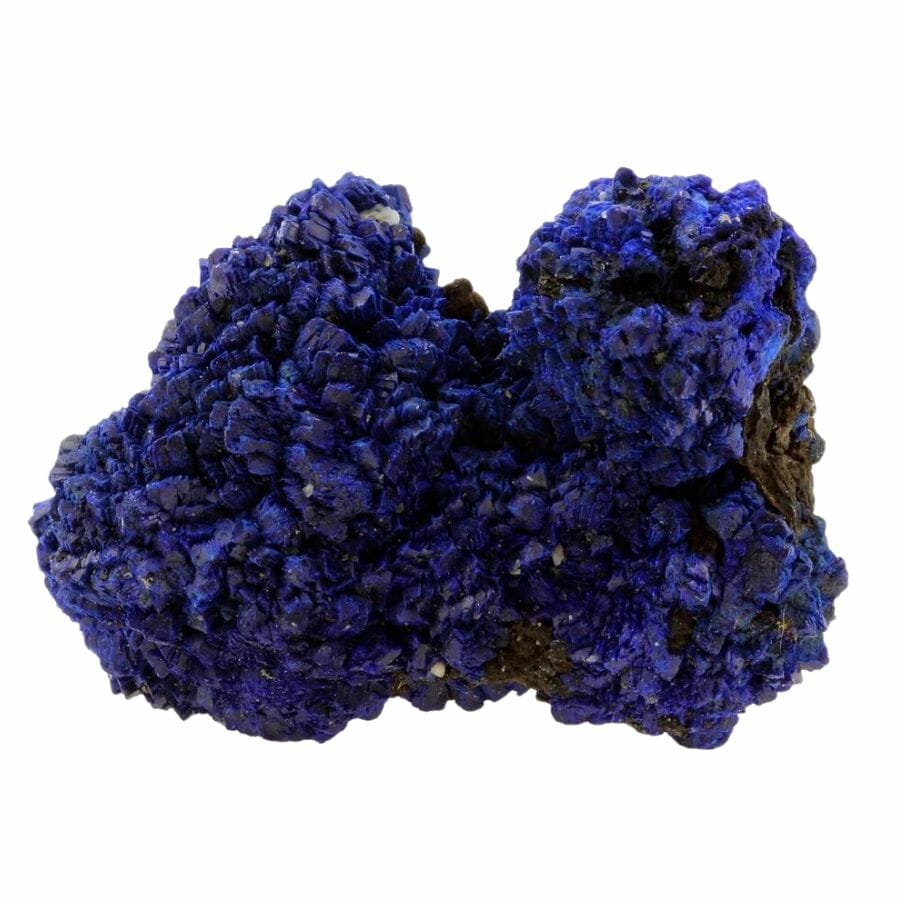
Azurite has such a deep, rich blue color that it’s hard to miss. It’s kind of like the blue you’d see in a really fancy painting.
Azurite’s deep blue color is caused by copper. When copper combines with carbon, oxygen, and a little bit of water in just the right way, it forms azurite.
This usually happens in copper-rich areas where the weathering of copper ore occurs over many years.
In Washington State, there’s a chance you might stumble upon some azurite, especially in areas where copper mining happened in the past. It can form bright blue crystals that are truly a sight to see.
Because of its stunning color, azurite has been used for thousands of years as a blue pigment for paint and decorative arts. Even today, it’s often polished and used in jewelry.
Plus, it’s just really fun for rock collectors to find because of its eye-catching color. Imagine finding a bright blue crystal in a pile of rocks!
So next time you’re out exploring, keep your eyes peeled for azurite. Who knows, you might just find a little piece of blue treasure!
Where you can find azurite in Washington
Check out the following areas if you want to find azurite:
- Johnsburg Mine, Cascade River, Cascade Mining District
- Queen Mine, Deer Trail Mining District
- Black and White Mine, North Fork of the Skokomish River Area
Carnelian
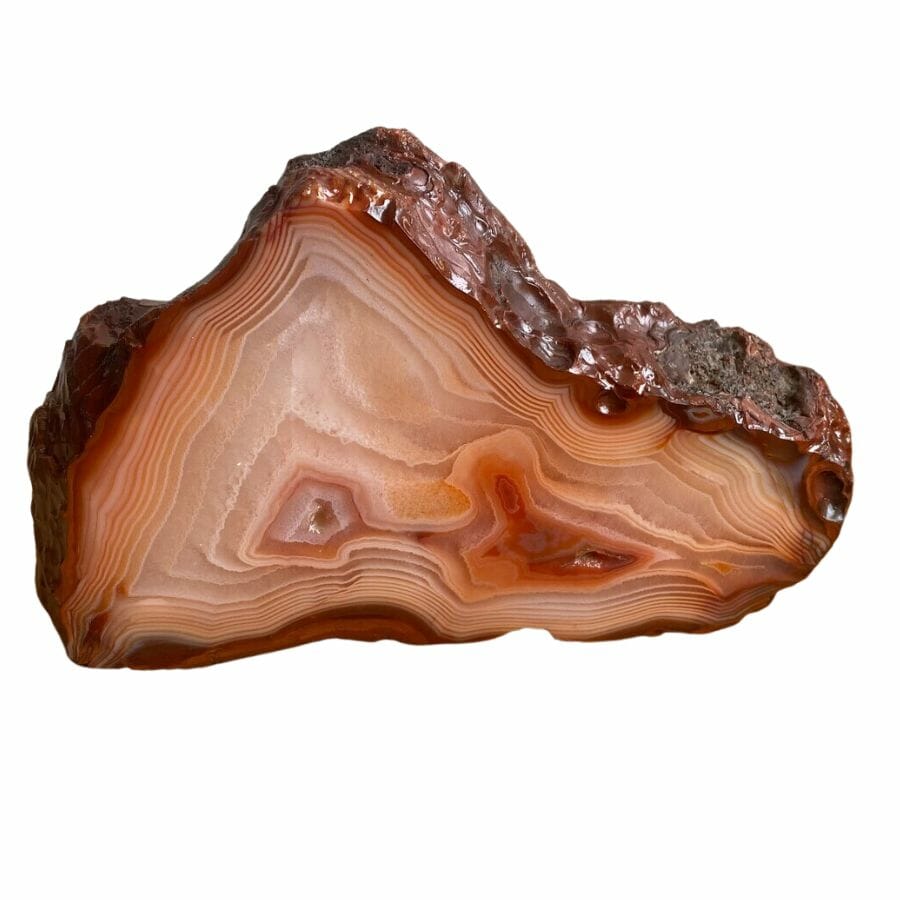
Carnelian’s color can range from orange to reddish-brown, and it’s got a sort of glassy or waxy look to it. It gets its beautiful color from iron impurities that are in it. The more iron, the deeper the color.
Here’s a cool fact: carnelian is actually a type of chalcedony, a mineral that’s made of teeny tiny crystals so small you can’t see them with the naked eye.
And how is it formed, you ask? Well, it usually forms in areas with volcanic activity or in places where hot, mineral-rich water can flow through the rocks.
The hot water can dissolve tiny bits of silica, and over a long time, these tiny bits can start to stick together and form crystals.
When there’s iron in the mix, those crystals become carnelian.
Due to its striking color and toughness, carnelian has a long history of being used in jewelry and decorative items.
Carnelian can look very much like red agate. If you’re struggling to tell the two apart, we have a comprehensive guide that can help you:
Where you can find carnelian in Washington
These are the spots where carnelian can be found:
- Salmon Creek, Toledo
- Kalama area, Cowlitz County
- Lucas Creek, Logan Hill
Garnet
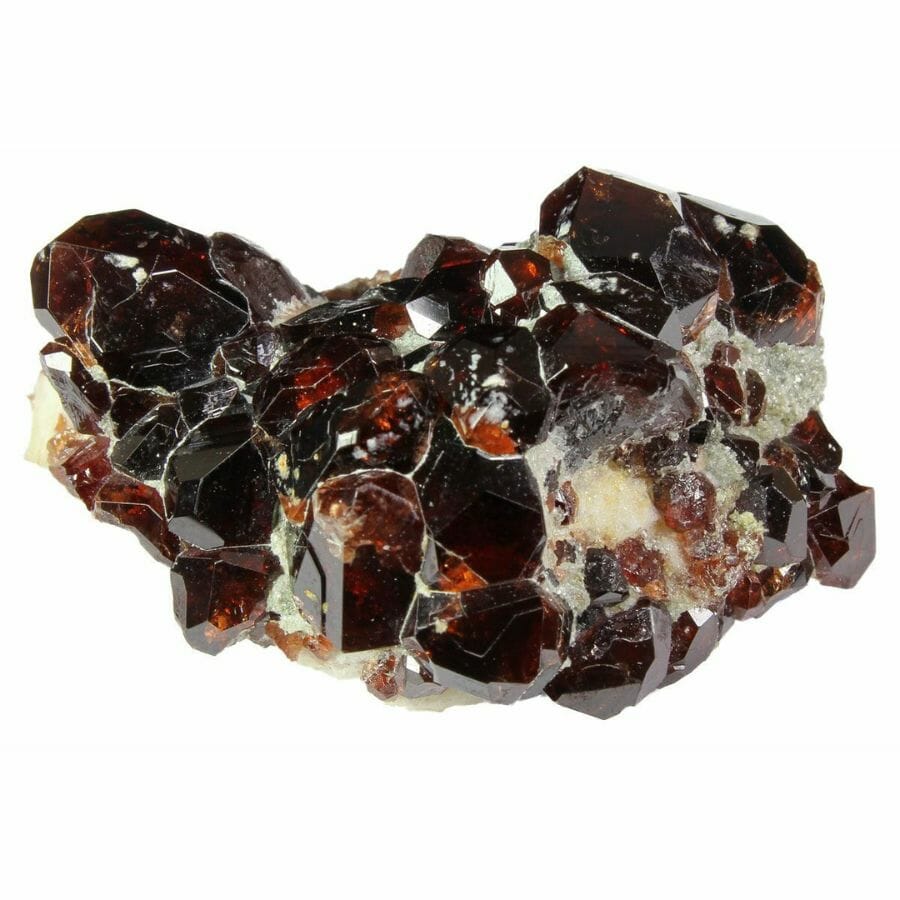
Imagine a gemstone that can be as red as a pomegranate seed or as green as the freshest leaves. That’s garnet for you! While many people know garnet for its classic deep red hue, it can actually come in a rainbow of colors.
From red, orange, and yellow to vibrant green and even black – the garnet family has it all.
It forms when some specific minerals get really hot and pressurized deep inside the Earth. Under the right conditions, garnet can form.
In Washington State, you can find a type of garnet called Almandine garnet. It’s got a special charm because of its deep, fiery colors. But you can also spot some grossular garnets, which come in a variety of colors.
Garnet is one of the most striking gemstones found in Washington for different reasons. It’s not just about its pretty colors. Garnet is pretty tough, so it can be cut and polished into lovely gemstones.
Where you can find garnets in Washington
Garnets can be found in these spots:
- Ruby Creek, North Cascades
- Sacheen Lake, Pend Oreille County
- Little Spokane River, Spokane
Serpentine
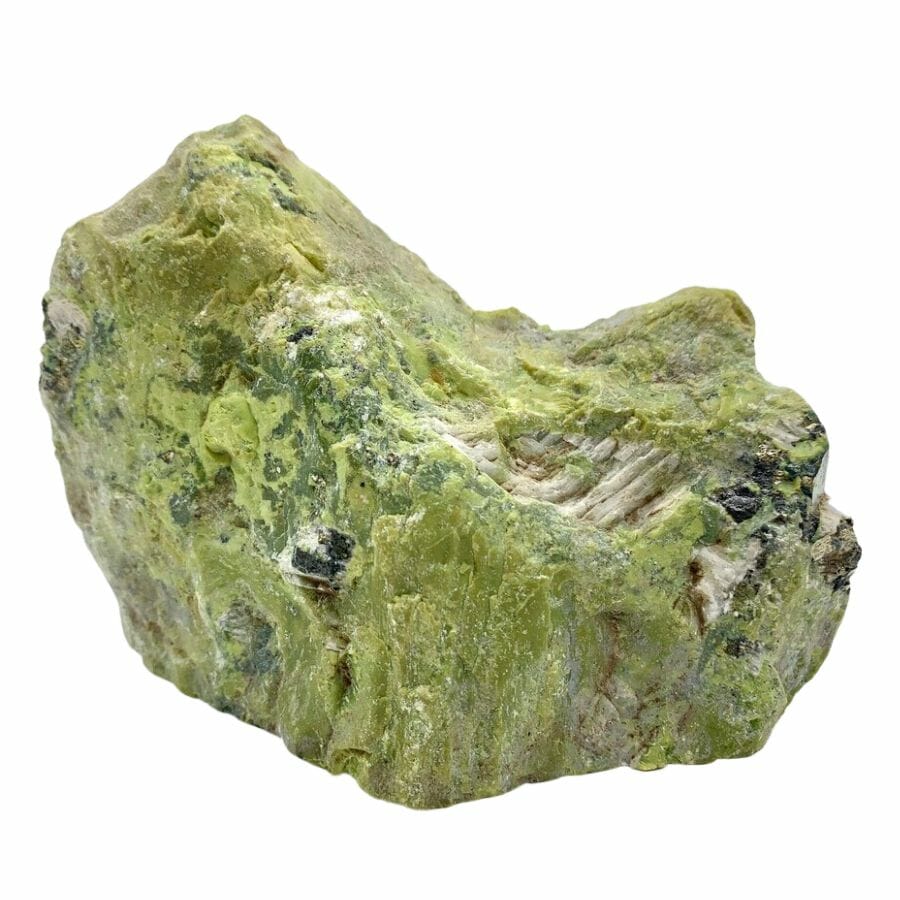
Imagine a rock that’s usually green, but can also be yellow, black, or white. That’s serpentine for you! Its name comes from “serpent” because it can have a snake-like pattern.
It forms deep inside the Earth, when water interacts with certain minerals at really high temperatures and pressures. It’s like a science experiment that takes millions of years!
In Washington State, you’ll come across a kind of serpentine called antigorite. This type is usually green and sometimes has a shiny, waxy surface.
Serpentine is pretty to look at and can be polished into beautiful gemstones or used for sculptures. It’s also the state rock of California, so it has some celebrity status!
Plus, some types of serpentine, like chrysotile, have been used in the past for things like insulation because of their fibrous nature.
But wait, there’s more! Serpentine is really interesting to scientists because it tells us about the deep, hidden parts of the Earth. Studying serpentine can help us understand what’s going on miles beneath our feet.
Where you can find serpentine in Washington
These are the places where you can find serpentine:
- Ruby Beach, Jefferson County
- Stepstone Prospect, Nespelem Mining District
- Alverson Mine, Fidalgo Island
Bloodstone
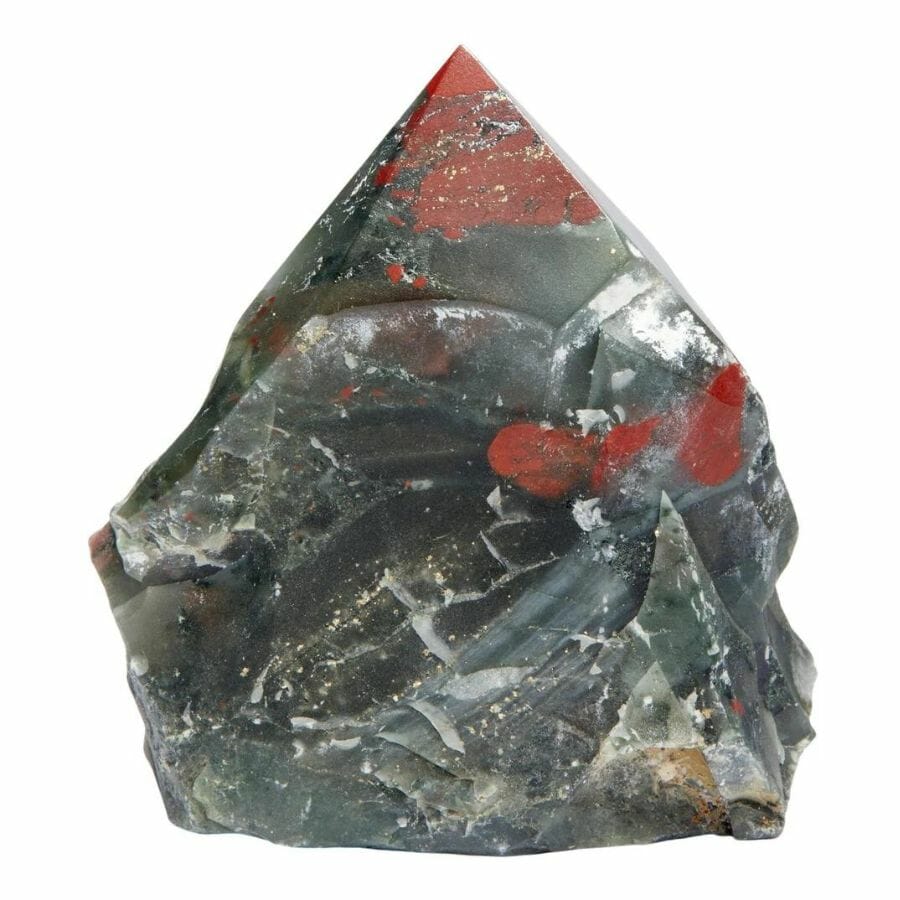
Bloodstone, also known as heliotrope, is a real rock star. Picture a dark green stone speckled with little red dots. It almost looks like drops of blood on a green background. Hence, the name “bloodstone.”
Bloodstone is a type of chalcedony, which is a kind of mineral made from a bunch of tiny crystals. The deep green color comes from another mineral called chlorite, while the red spots are due to iron oxide.
The way bloodstone forms is a bit similar to other chalcedonies. It’s formed in places like riverbeds or hot springs where hot water rich with silica and other minerals can seep into rocks.
Over time, these minerals get together and start forming crystals, and voila, we get bloodstone!
You can find bloodstone in Washington State. Just like carnelian, the color and look of the bloodstone can vary based on the specific conditions where it formed. Sometimes the stone is more dark green; sometimes, it’s got more red spots.
Where you can find bloodstone in Washington
You can find bloodstone if you look in these areas:
- Walter Swift farmhouse, Cowlitz County
Tourmaline
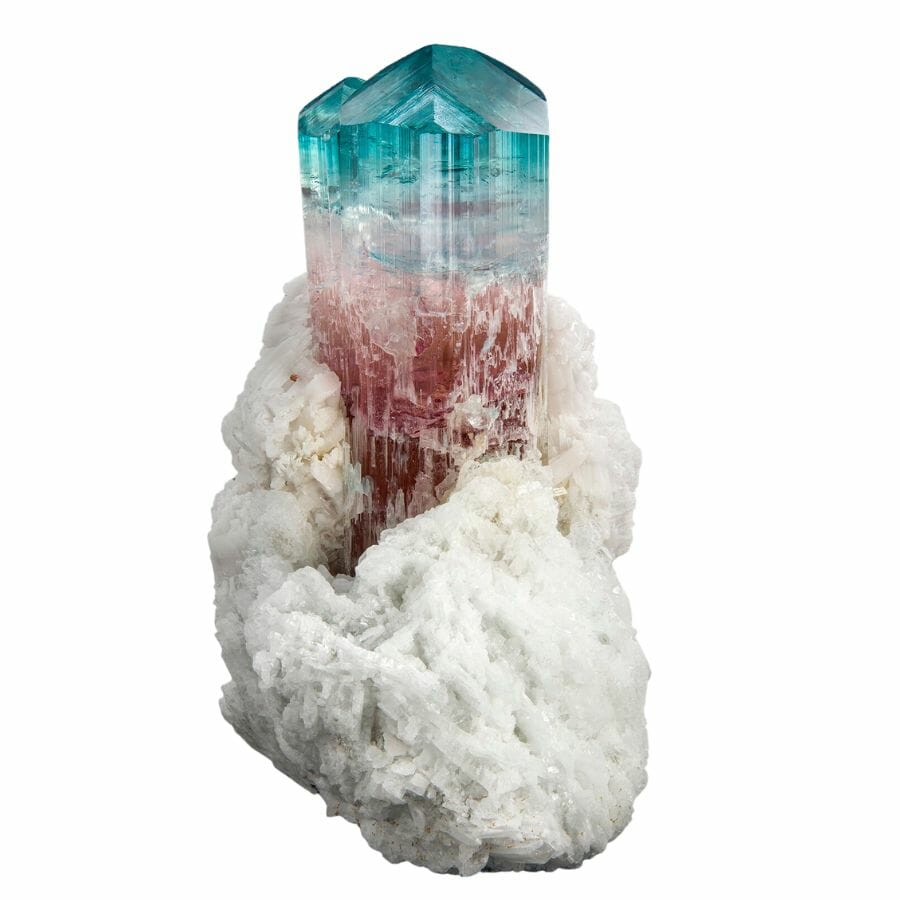
Tourmaline is one of the most vibrant gemstones found in Washington. It can come in almost every color you can think of, and even a single crystal can show multiple colors!
It forms in many types of rocks when elements like boron get together with silica, the stuff that makes up sand.
In Washington State, you’ll find different colors of tourmaline, like green, black, and sometimes pink. Each one has its own unique shade and sheen, making each piece of tourmaline one-of-a-kind!
There are a lot of reasons why tourmaline is valued by many. With so many colors, it’s a favorite for jewelry.
But that’s not all. Tourmaline has an interesting trick up its sleeve. When you heat it or squeeze it, it can generate electricity. This property is used in some pressure-measuring equipment.
Where you can find tourmaline in Washington
You can find tourmaline in these areas:
- Washington Metals Mine, Stevens County
- Sunrise Mine, North Fork of the Sultan River, Sultan Mining District
- Polar Star Mine, Black Falls
Rhodonite
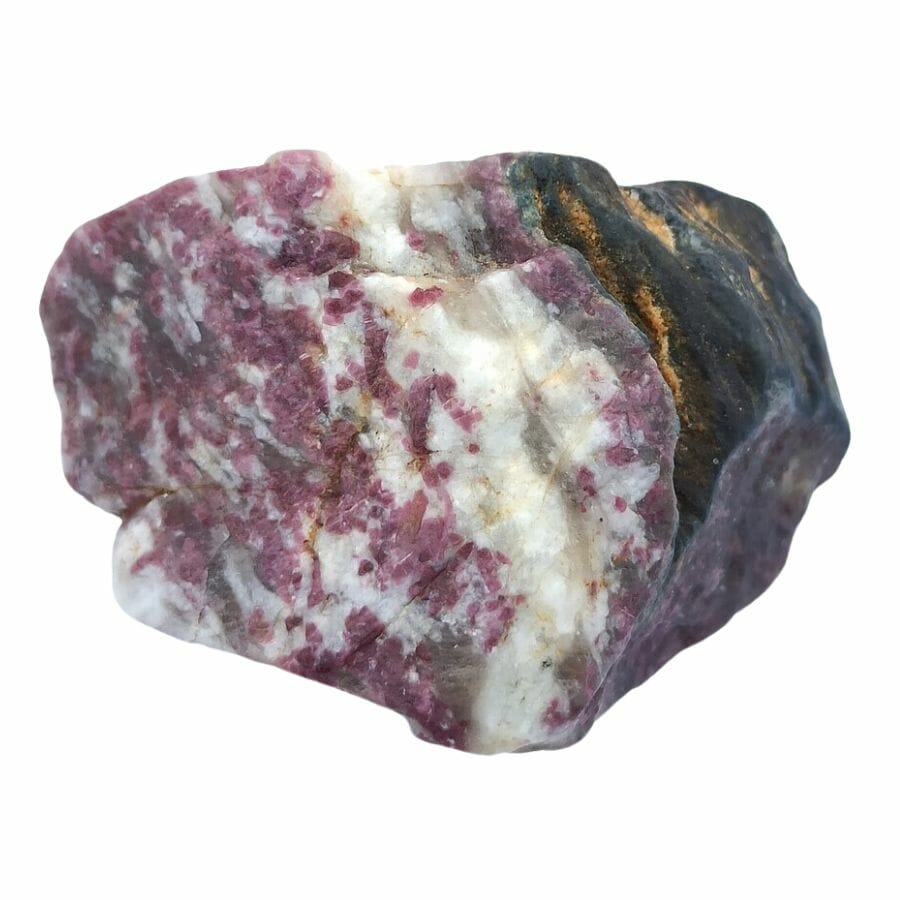
If you’ve never seen rhodonite before, picture a stone that’s a rosy pink color with black veins running through it. These colors make for quite an interesting combination!
Rhodonite is a manganese silicate mineral. Here’s how it forms: when magma from deep inside the Earth cools down, the molten rock starts to solidify. Some minerals crystallize faster than others. Manganese is one of the elements that crystallize last.
With time, if there’s manganese, silica, and a few other ingredients around, they can join together and form rhodonite.
There are many reasons why rhodonite is pretty popular. First off, it’s just plain beautiful. That pink and black color combination is really something else. People love to use it for jewelry and decorative items.
But there’s also a practical side to rhodonite. It’s quite a tough mineral, which means it’s good for things that need to withstand a bit of wear and tear.
Where you can find rhodonite in Washington
Here are the places where you can find rhodonite:
- Great Western Mine, Nespelem Mining District
- Skunk Creek 19 Mine, Quinault Lake
- Hurricane Mine, Clallam County
The Crystals Found in Washington
We’ve crafted a complete guide to dive deeper into the world of Washington’s crystals, from celestite to zircon. We can also help you find more spots to explore:
Calcite
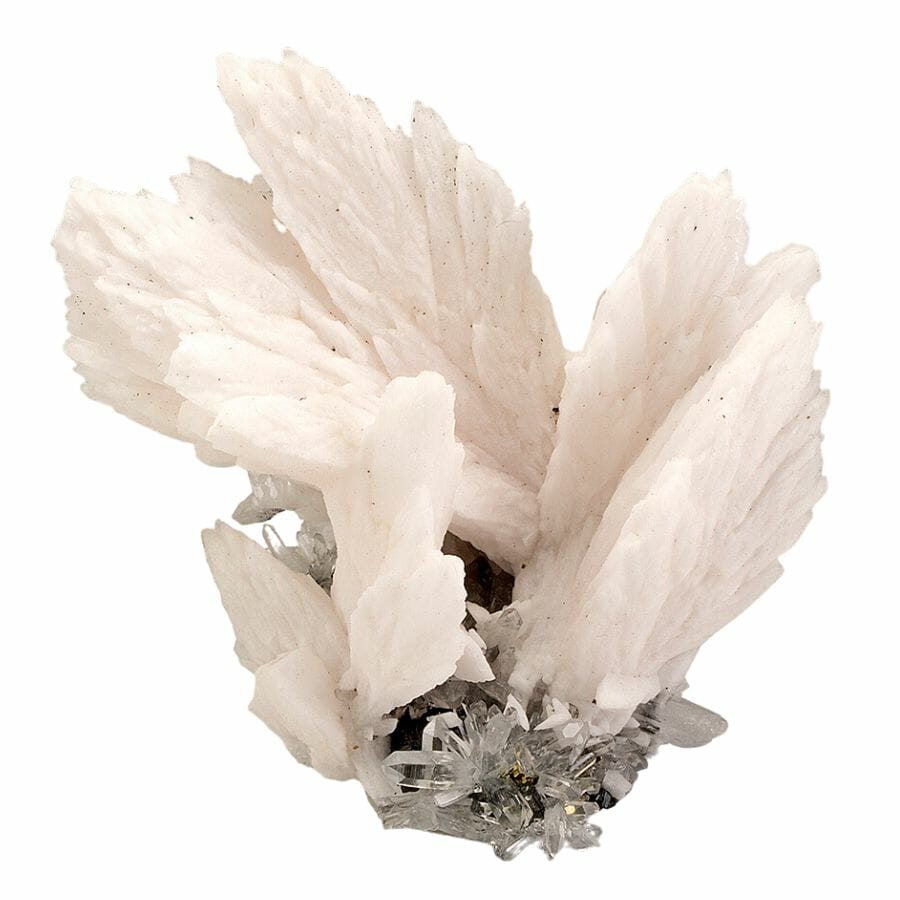
Calcite forms when limestone or marble changes under heat and pressure, or when hot water containing calcium and carbonate gets into cracks in the earth. In Washington State, you’ll often find clear or white calcite.
It can also be found in a bunch of other colors too, like red, yellow, and even blue.
Because it comes in different shapes and colors, calcite is great for collection and decoration. Its smooth texture and shiny surface can really catch the eye.
But calcite’s got more tricks up its sleeve! If you look through a clear piece of calcite, it can split light into two rays. This is called double refraction and it’s a neat party trick!
Calcite is also used in construction. It’s used to make cement and is even ground up to be used in the paint used to create white lines on the road!
Another interesting thing about calcite is that it reacts with a common acid, vinegar. It fizzes up when you drop vinegar on it! This reaction helps us identify it out in the field.
Where you can find calcite in Washington
Calcite can be found in the following places:
- Pullman area quarries, Pullman
- Lovitt Mine, Wenatchee Mining District
- Mount Vernon Mine, Skagit County
Epidote
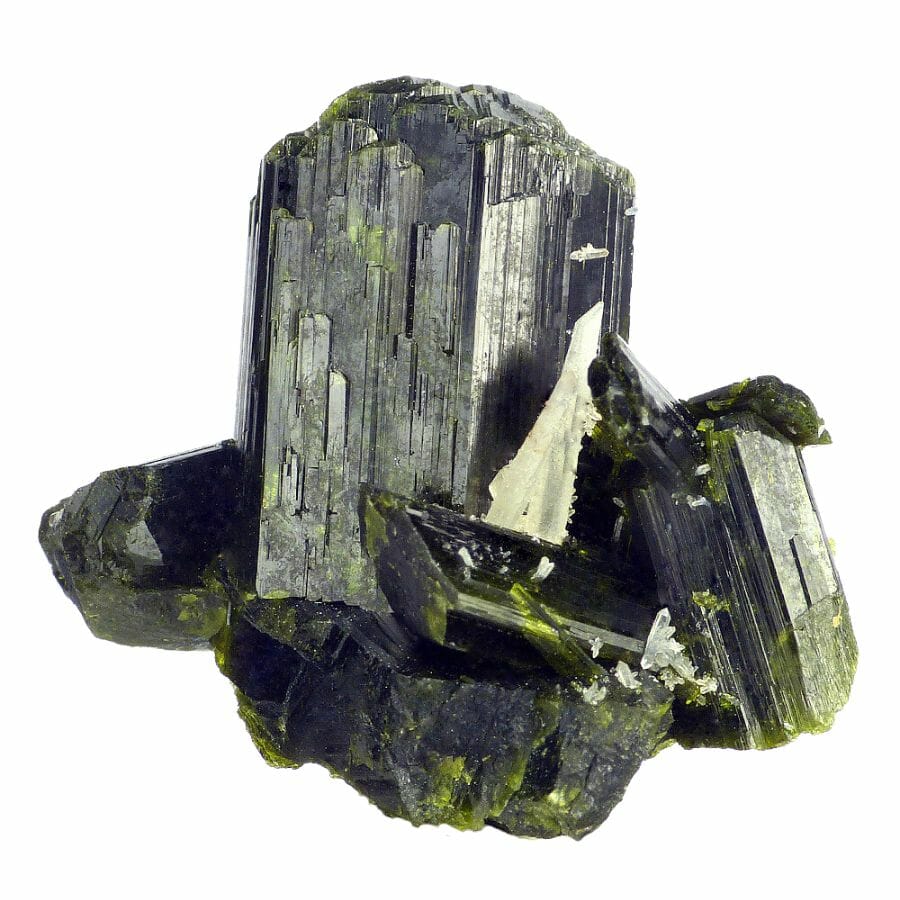
Epidote is one of the coolest crystals found in Washington. It forms when rocks like basalt and gabbro get altered by heat and fluids.
Over in Washington State, you’ll often find epidote in its green version. It can range from a yellow-green to a dark, bottle-green color. No two pieces of epidote are exactly the same, which makes it really interesting!
These pretty green hues make it a popular choice for people who love collecting minerals. They love its distinctive color and how different each piece can look. It’s a little bit like having a piece of the great outdoors right in your pocket!
Gem enthusiasts also sometimes use it to make jewelry. Its greenish glow can be the centerpiece of a necklace or the sparkle of a ring. Plus, it can form alongside other minerals.
Where you can find epidote in Washington
Look in the following areas to find epidote:
- Belcher Mine, Belcher Mining District
- Humpback Mountain Slump Zone, Hansen Creek, Snoqualmie Mining District
- Nevada Mine, Chewelah Mining District
Celestite
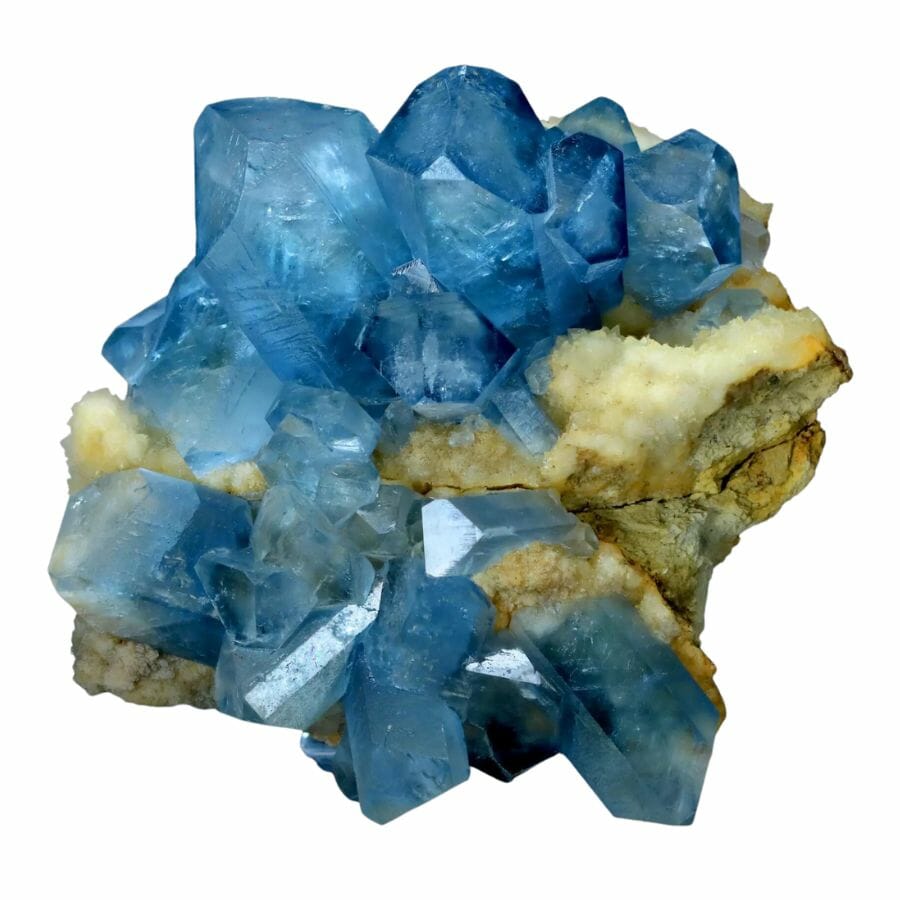
Celestite, also known as celestine, is one of those minerals that truly earns its name. Its name comes from the Latin word for “heavenly,” and boy, does it live up to that! It often comes in a sky-blue color, but it can also be colorless, white, or pale green.
Here’s the cool part: celestite forms in sedimentary rocks, usually in cavities and cracks. When groundwater packed with the right minerals gets into these spaces, it leaves behind celestite as it evaporates.
It’s not surprising that people are fascinated by celestite. For one thing, its color is something special, with its calming, sky-like hue. It’s a favorite among mineral collectors and is sometimes even used in jewelry.
But that’s not all! Celestite is also a scientific superstar. It’s rich in the element strontium, which is used in making fireworks and flares. When you see red fireworks, that’s strontium at work!
Where you can find celestite in Washington
Celestite can be found in these areas:
- Alverson Mine, Fidalgo Island
- Excelsior Creek Celestine Occurrence, Index Mining District
Realgar
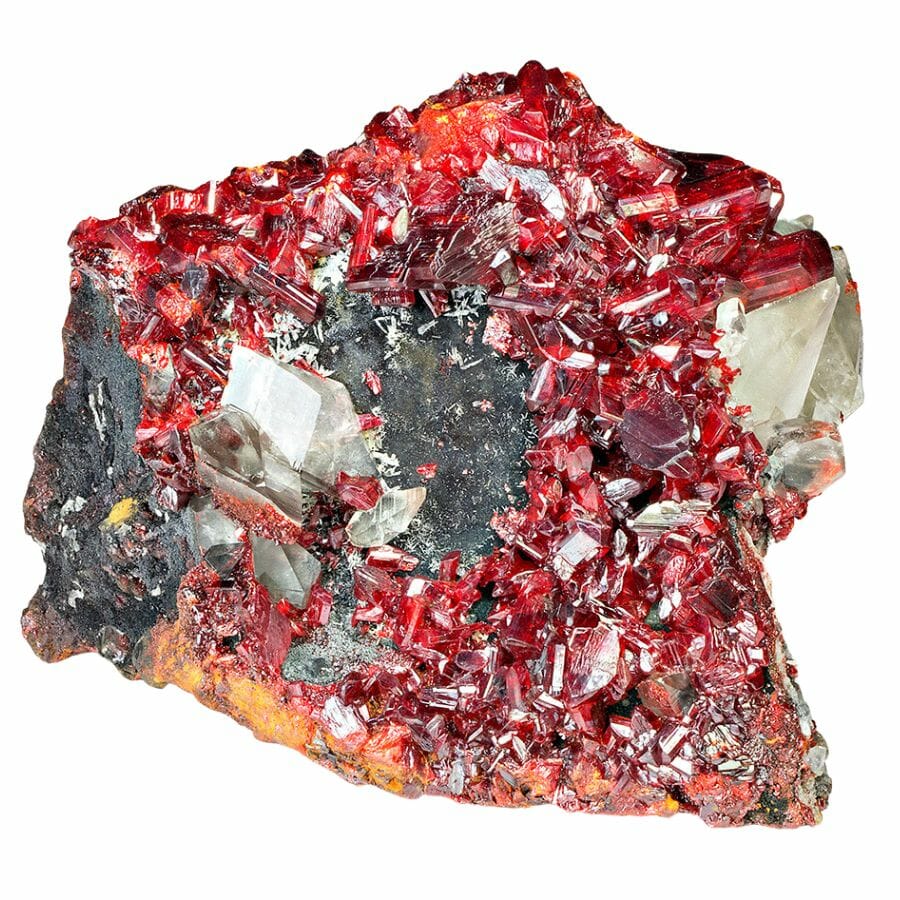
Realgar has a vibrant red-orange color that really makes it stand out. And guess what? It glows under ultraviolet light!
Realgar usually pops up in low-temperature hydrothermal veins. This means that hot water, packed with different minerals, pushes its way into cracks in the rocks. As the water cools down and evaporates, it leaves behind minerals like realgar.
In Washington State, realgar might be found alongside other cool minerals like orpiment and stibnite.
Realgar isn’t just pretty to look at. It’s also got some practical uses. In the past, it was used to make a bright red paint. But here’s a tip: you wouldn’t want to paint your bedroom with it because realgar contains arsenic, which can be harmful.
For us rock lovers and scientists, realgar is also a neat clue about what’s going on underground. By studying where and how it forms, we can learn more about the geological conditions of the area.
Where you can find realgar in Washington
Look in these spots if you want to find realgar:
- Royal Reward Mine Area, Green River Area
- Mineral Creek Mine, Lewis County
- Mystery Mine, Monte Cristo Mining District, Snohomish County
Fluorite
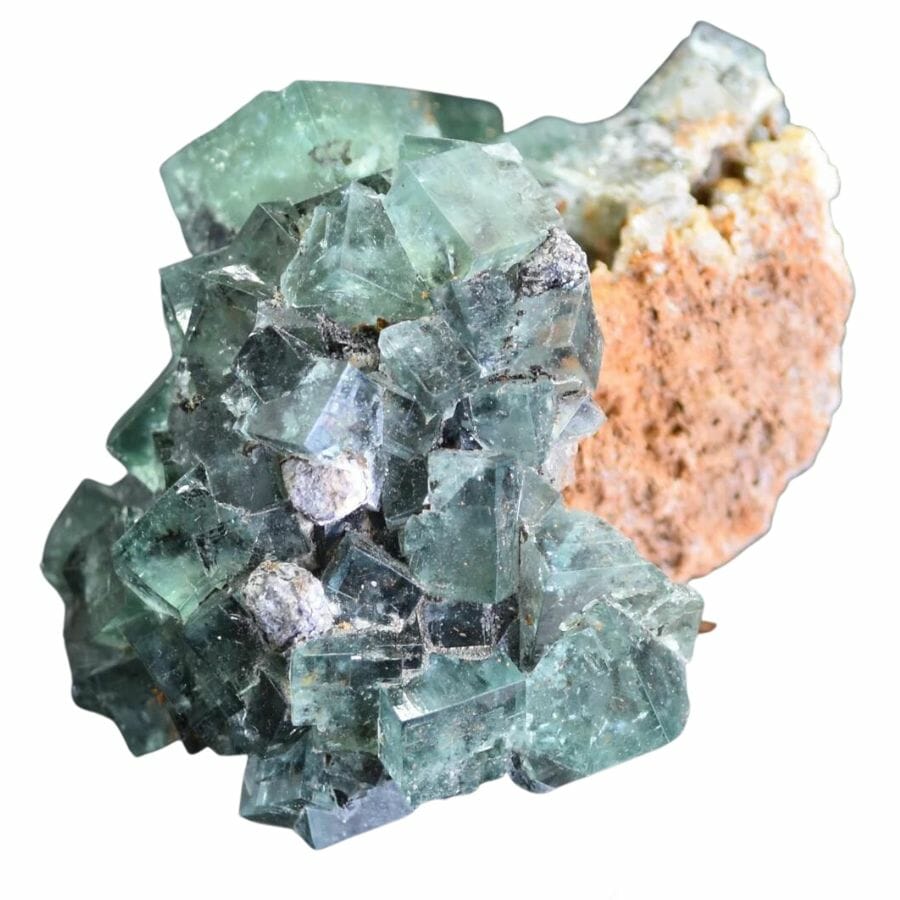
Time to explore a spectacular mineral: fluorite! It’s famous for its range of colors that include purple, blue, green, yellow, and more. It’s like a rainbow hiding in a rock!
Fluorite usually forms in places where rocks are heated up by the earth’s natural heat, causing different minerals to dissolve into hot water.
As this water cools, the minerals start to solidify and fluorite is born. It’s kind of like how you can see sugar crystals form when you make rock candy!
In Washington State, we find fluorite in a range of places. It could be in veins of other rocks or in large chunks, like a buried treasure. The cool thing about fluorite in Washington is that it can show a huge range of colors, making it a real feast for the eyes!
People value fluorite for a bunch of reasons. Its many colors make it a hit for jewelry and decoration.
But this mineral is more than just a pretty face! Fluorite is used in making special lenses for telescopes and cameras, because it can help reduce distortion and make the picture clearer.
Where you can find fluorite in Washington
You can find fluorite if you look in these areas:
- Quartz Creek Roadcut, Lewis River
- Mitchem Mine, San Poil Mining District
- Phalen Lake Molybdenite Prospect, Northport Mining District
Amethyst
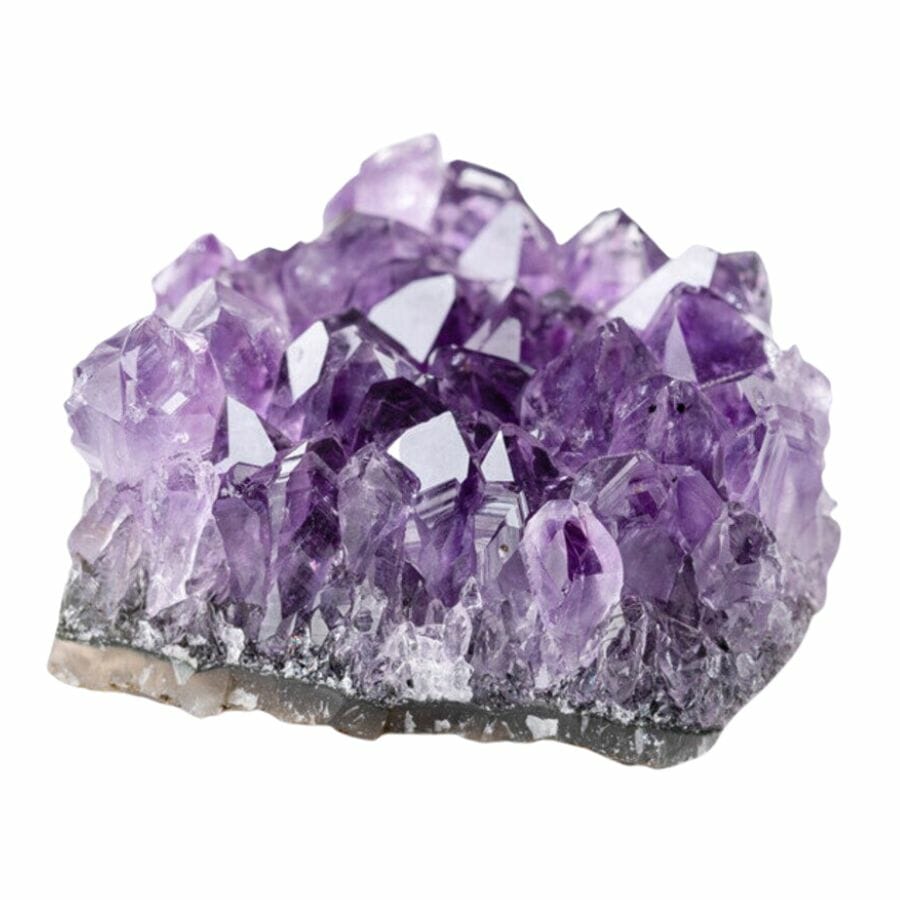
Amethyst is a type of quartz, but it has a magical purple color that ranges from light lavender to deep violet. This hue comes from iron and other trace elements that get caught up in the mix as the crystal forms.
Imagine water that’s rich with dissolved quartz seeping into empty spaces in rocks, then slowly cooling and crystallizing over thousands, or even millions, of years. That’s how we get these gorgeous amethyst crystals!
Amethyst is one of the most popular rocks and minerals found in Washington for many reasons. First, its stunning purple color makes it a favorite for jewelry and decoration. It’s also the birthstone for February, so it makes a great gift.
Some folks believe it has special properties, like bringing calm and balance.
And it’s not just about beauty or beliefs. Amethyst can also give scientists clues about the geological conditions of the past. So, it’s not just a pretty face – it’s a little purple history book too!
Where you can find amethyst in Washington
The following places can be good spots to find amethyst:
- Abernathy Pit, Cowlitz County
- Red Top Mountain, Swauk Mining District
- Walker Valley, Skagit County
Washington has a wealth of amethyst. See our guide to the best spots to find this crystal:
Zircon
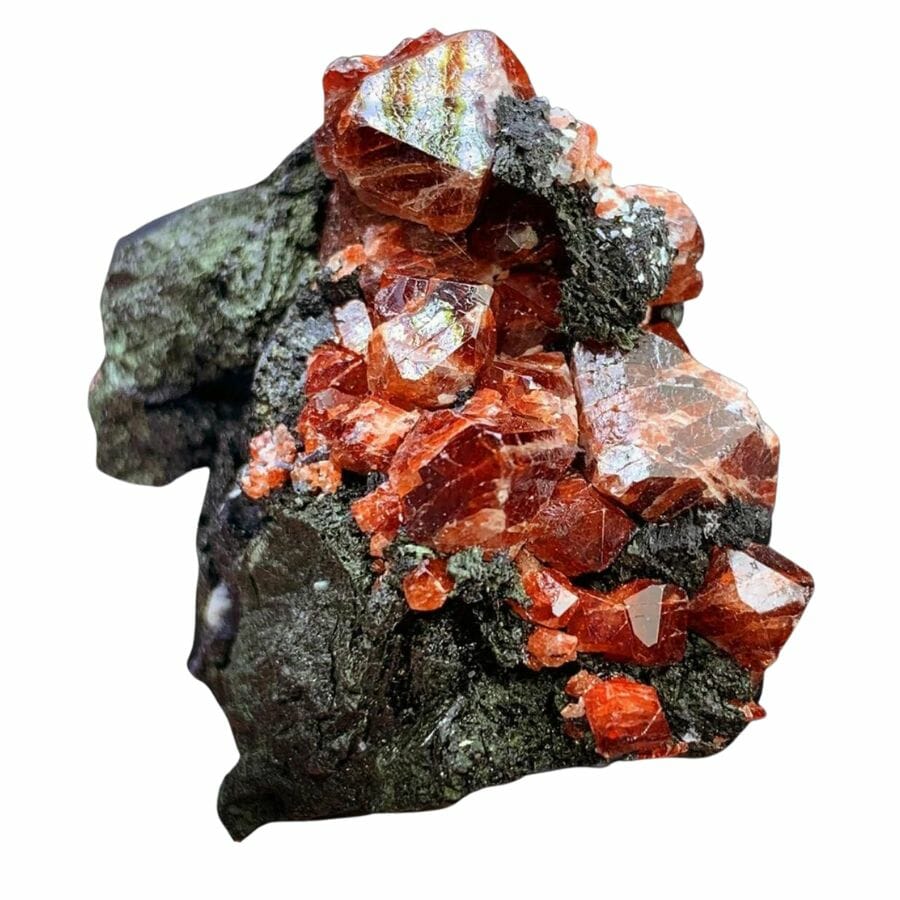
Zircon is an amazing gemstone that sparkles and shines in a way that can easily be mistaken for diamonds!
This gem has been around for a long time and is known for its striking colors, which can range from clear to deep red, blue, green, and many shades in between.
This crystal forms in molten rock, or magma. When this magma cools and hardens into rock, zircon crystals begin to form. The magic ingredient that helps make zircon is zirconium, a special element that’s mixed into the molten rock.
Zircon is one of the most popular crystals found in Washington, and for good reason. First, it’s durable. It can last a long time without getting scratched or damaged.
Second, because of its brilliance, it’s often used in jewelry as an affordable alternative to more expensive stones.
If you like diamonds but not their price tag, zircons are a great alternative. They’re not as tough as diamonds, but they’re tough enough to be worn semi-regularly.
Where you can find zircon in Washington
You can find zircon deposits in these places:
- Snake River placer, Clarkston
- Cedar Creek Placer, Clallam County
- Crawfish Lake Area, Okanogan County
The Most Valuable Rocks and Minerals in Washington
The types of rocks found in Washington are diverse and fascinating to explore. Now that we’ve gone through the more common crystals and gems that you can find in the state, we’re going to look at the rarer finds that you might come across.
Opalized wood
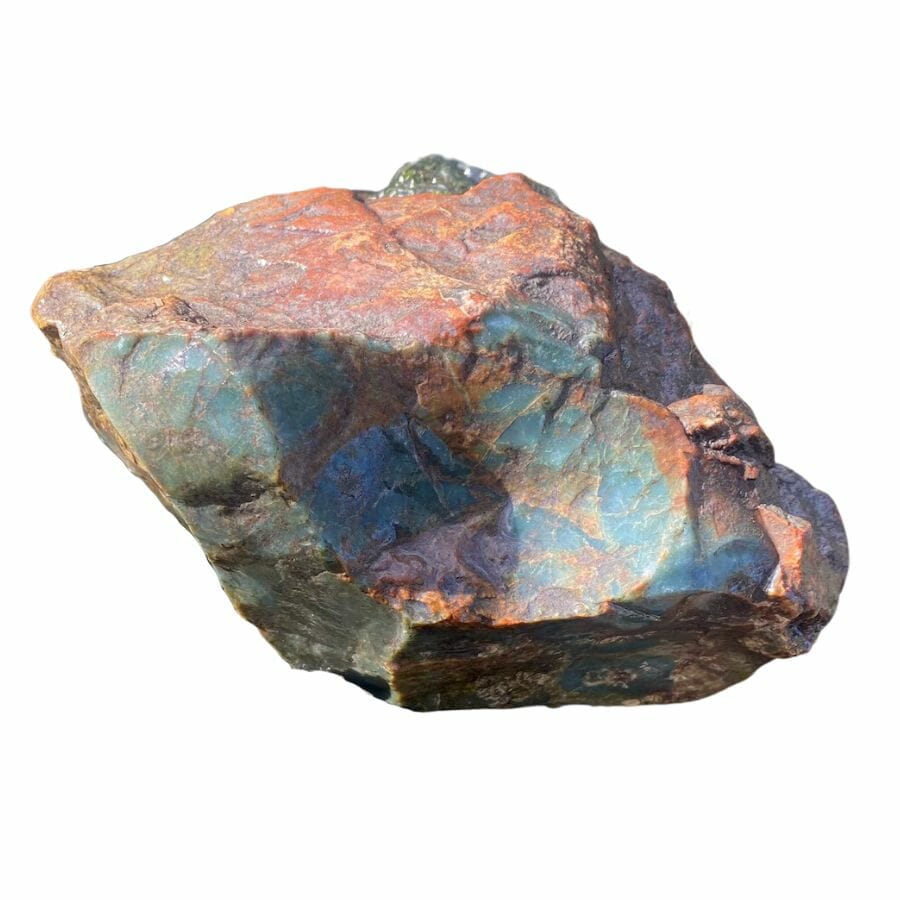
Now, if you think petrified wood is cool, just wait until you hear about opalized wood!
Just like petrified wood, opalized wood forms when a tree falls in a wet place, gets covered up, and begins to decay. But here’s the twist. Silica-rich water seeps into the wood and slowly replaces the wood’s organic material.
Over a long time – think millions of years – this silica hardens and forms opal within the wood structure. So, when you think about the valuable rocks in Washington, remember the magic of opalized wood and its journey from tree to treasure!
The end result is absolutely stunning: a piece of wood that’s been turned into opal! The wood’s original structure is preserved, but now it sparkles with all the colors of the rainbow.
Imagine seeing a tree’s growth rings shining with blues, greens, reds, and more. That’s opalized wood for you!
Washington State is one of those special places where you can find opalized wood. While it’s not as common as petrified wood, the pieces you can find here show a variety of colors and patterns. It’s truly a local treasure!
Where you can find opalized wood in Washington
These places are known spots where you find opalized wood:
- Diatomite Mines (Diatomite Pit North), Quincy
Amber
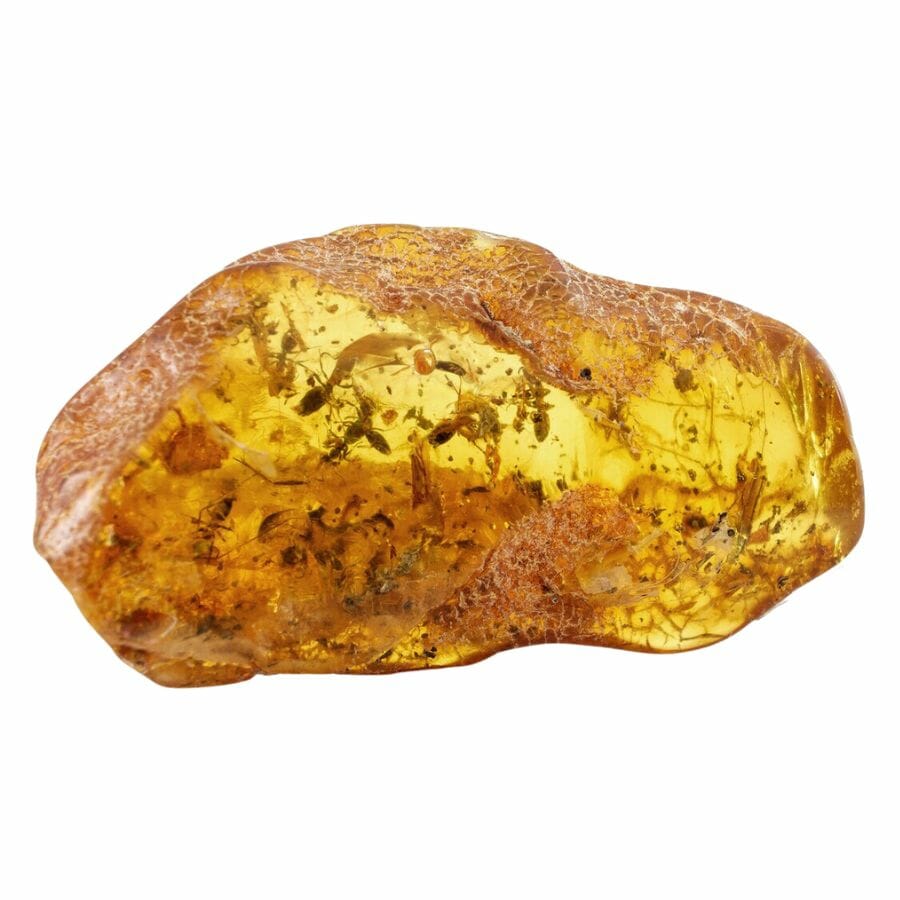
Amber is like a time machine in the world of rocks! It’s not a rock or a mineral but is actually tree resin that’s been fossilized over millions of years. Imagine tree sap getting hard and turning into a gemstone!
When trees get injured, they produce sticky sap. This sap can trap and preserve small things, like bugs, leaves, or even tiny feathers. As time goes on, this sap hardens and gets covered by layers of soil.
Millions of years pass, and with the right conditions, this hardened sap becomes the beautiful amber we see today.
While Washington isn’t the most famous spot for amber, there are indeed types of amber found here. They might not always have cool bugs inside, but they sure are pretty.
These pieces of amber tell silent stories of ancient forests that once stood in the region.
People all around the world value amber for several reasons. The warm glow of amber, ranging from golden to reddish or even greenish, makes it a favorite for jewelry.
And those pieces with ancient bugs or plants? They’re like natural history museums you can wear!
Where you can find amber in Washington
Check out these spots to find amber:
Jade
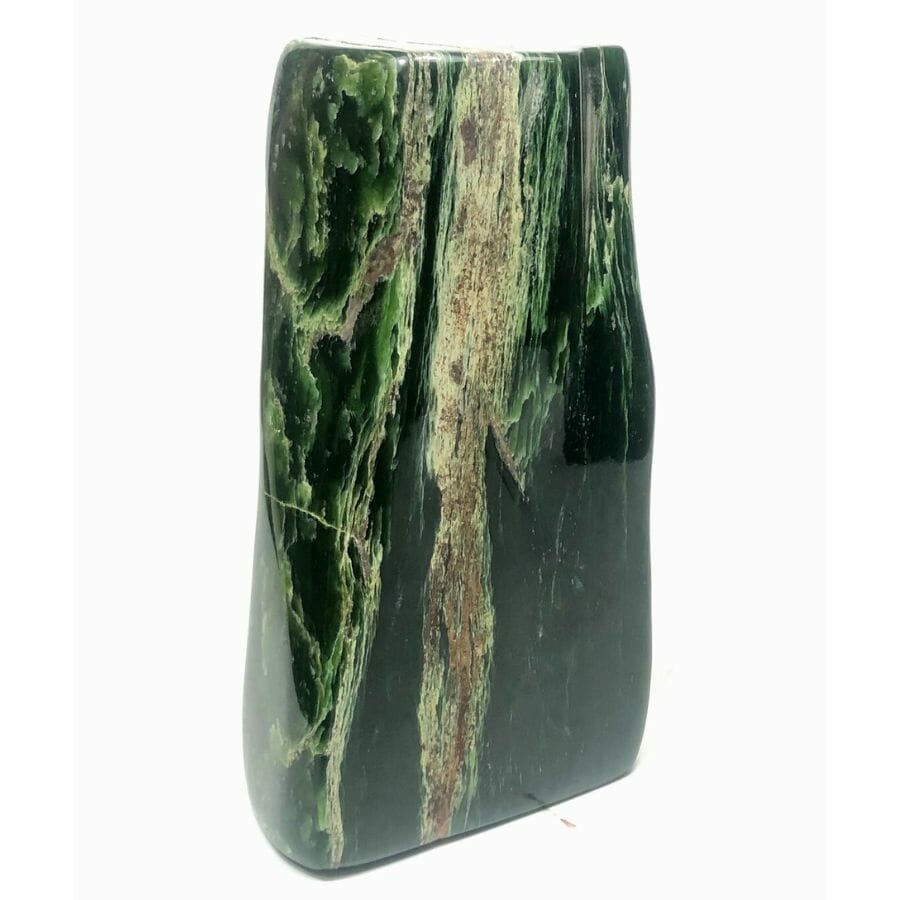
Jade isn’t just one of the most valuable rocks in Washington. It’s been cherished for thousands of years around the world. It’s smooth, shiny, and feels cool to the touch.
When you see a piece of jade, it’s hard not to be captivated by its rich, lustrous color.
Now, here’s the cool science part: jade isn’t just one mineral. It’s actually two! There’s nephrite and jadeite. Both of these minerals can be called jade, but they have different compositions and structures.
It’s like having two recipes for cookies; both can be delicious, but they have different ingredients.
Washington State is home to nephrite jade deposits. This jade is found in certain parts of the state, nestled within specific rocks. The jade from Washington is known for its deep, vibrant green colors.
Because jade is so tough, it holds up very well to carving and polishing. That’s why it’s been used for thousands of years to make tools, sculptures, and jewelry. It’s also why high-quality jade is expensive.
Where you can find jade in Washington
Check out these locations if you want to find jade:
- Jumbo Mountain, Darrington Mining District
- Stephens Mine, Skagit County
- Finney Creek, Skagit County
Opal
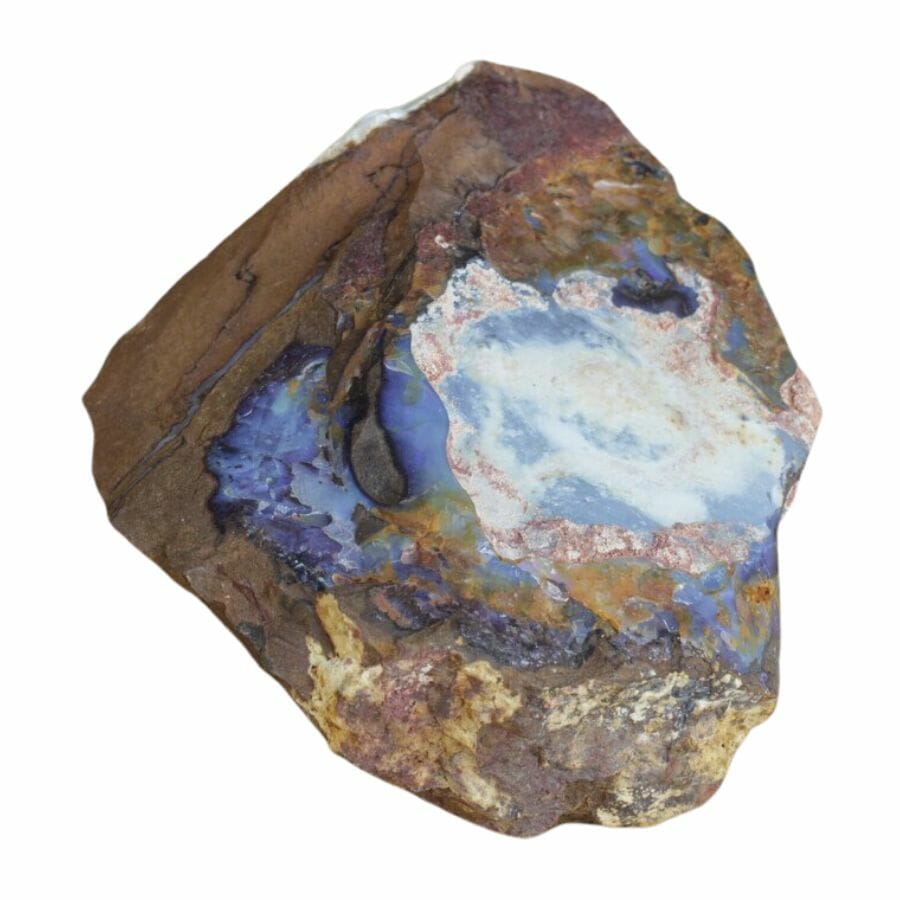
Opal is like the rainbow of the rock world. It’s not just a plain stone; it’s a dazzler that can flash a whole spectrum of colors. Imagine glancing at a piece of opal and seeing blues, reds, greens, and yellows dance across its surface.
Opal is born when rainwater, carrying dissolved silica (think of it like super-fine sand), seeps into cracks in the ground. Over a really long time, this mix dries up and forms opal. It’s like nature’s own art project!
Washington State, known for its lush forests and mountains, also has pockets where opal is found.
While it might not be the most famous spot for opal in the world, the state still houses some pretty specimens. Some are milky white, some are green, and others have those famous flashes of color.
But opal isn’t just about looks. The way it forms can tell us a lot about the ancient climate. Scientists can study opal to learn about things like how wet an area was millions of years ago.
Opal is also the birthstone for October, so it’s special for anyone born in that month!
Where you can find opal in Washington
You can look for opal in these areas:
- Washington Pass, Golden Horn Batholith
- Medicare Beach, Warden
- Roy Mine (Fisher Mine; Morton Mine; Gillispie Mine), Glenoma, Morton Mining District
How to Identify The Rocks and Minerals Found in Washington
Washington rock identification can be a fun thing to do after a day of exploration. It’s all about noticing little clues and piecing them together to identify the rocks and minerals you’ve found.
The truth is, you won’t need any complicated or expensive equipment to identify rocks and minerals.
If you’re really unsure, you can take specimens to a geologist for identification. But most of the time, you can identify minerals by yourself with a few simple tools.
Check the color of the rock
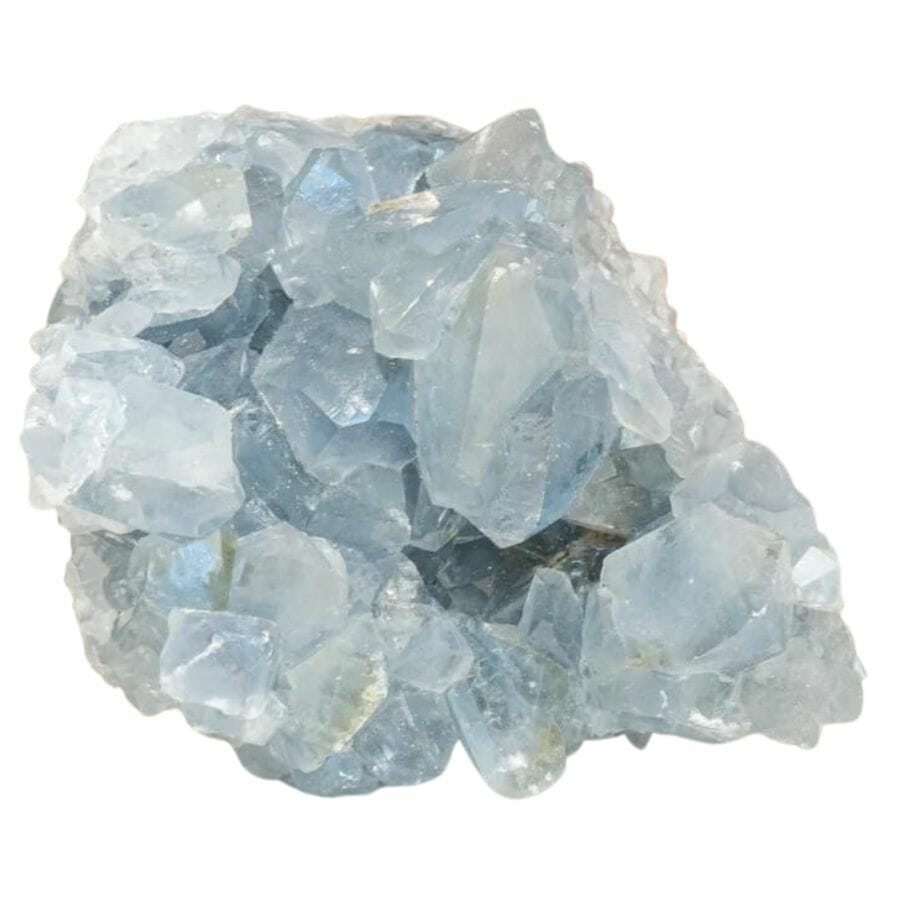
Looking at the color of rocks, minerals, and gems is like unlocking the first piece of a jigsaw puzzle. It’s the first clue in the mystery. Some minerals, like quartz, can come in many different colors – from clear to pink, to purple, and even to black.
That’s because tiny bits of other elements sneak in while the quartz is forming and changes its color.
Other rocks and minerals, meanwhile, always come in the same colors. Take gold for instance. It’s always that shiny yellow color. You won’t find gold in blue or red.
The same is true for many gems too. Emeralds, for example, are always green. The intensity of the green can vary, but you won’t find a blue or yellow emerald.
But it’s important to remember that while color is a helpful clue, it’s not the only one. Two minerals might share the same color but be completely different.
So while color is a great starting point in identifying rocks, minerals, and gems, we have to use it along with other tests and clues to get the full picture.
Keep that in mind as you embark on your rock-hunting adventures!
Test the hardness
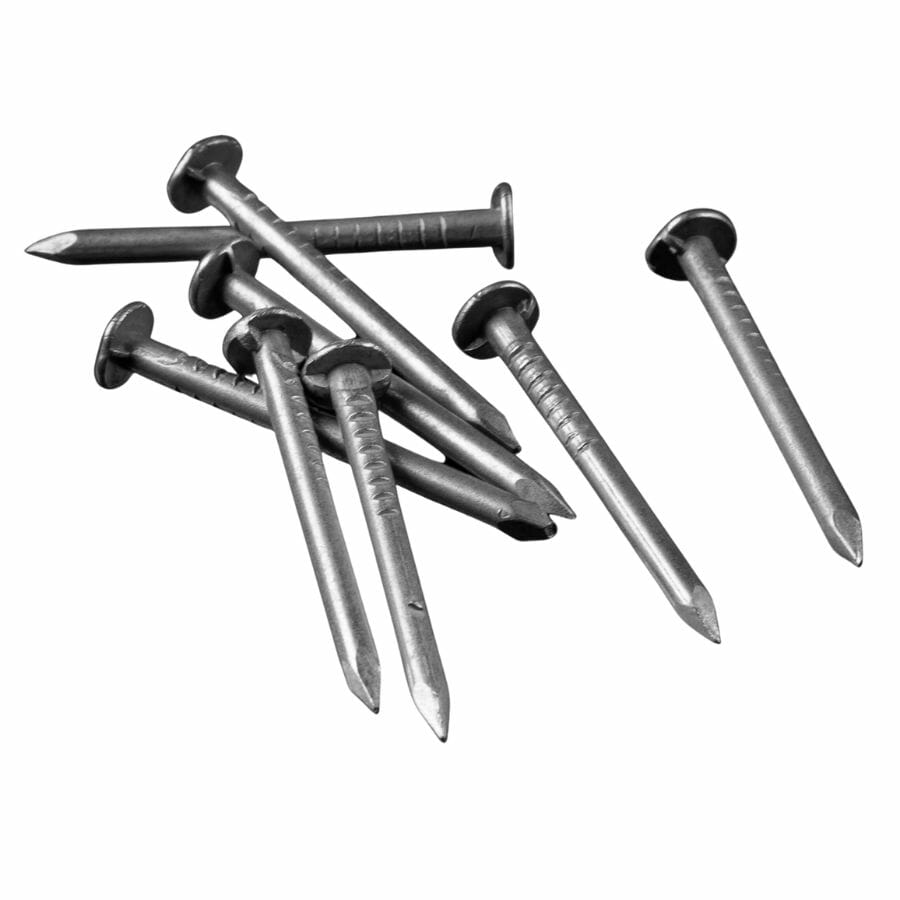
Checking the hardness of rocks, minerals, and gems can be like playing a detective game. And our best tool for this game is the Mohs Hardness Scale. It’s a super handy way to find out how hard your rock or mineral is.
Here’s how it works: if your mineral can scratch another substance, then it’s harder than that substance. But if another substance can scratch your mineral, then your mineral isn’t as hard.
For example, if you have a quartz (which is a 7 on the Mohs scale) and it can scratch a piece of glass (which ranks about 5.5 on the Mohs scale), then you know your quartz is harder than the glass.
The coolest thing about this scale is that it’s not just for scientists in fancy labs. You can use it anywhere, like your backyard, the park, or even your school playground.
So, next time you’re out and about, see if you can scratch your rocks with a steel nail (which is a 5.5 on the Mohs scale). You might just learn something new about the rocks in your own backyard!
Identify the streak
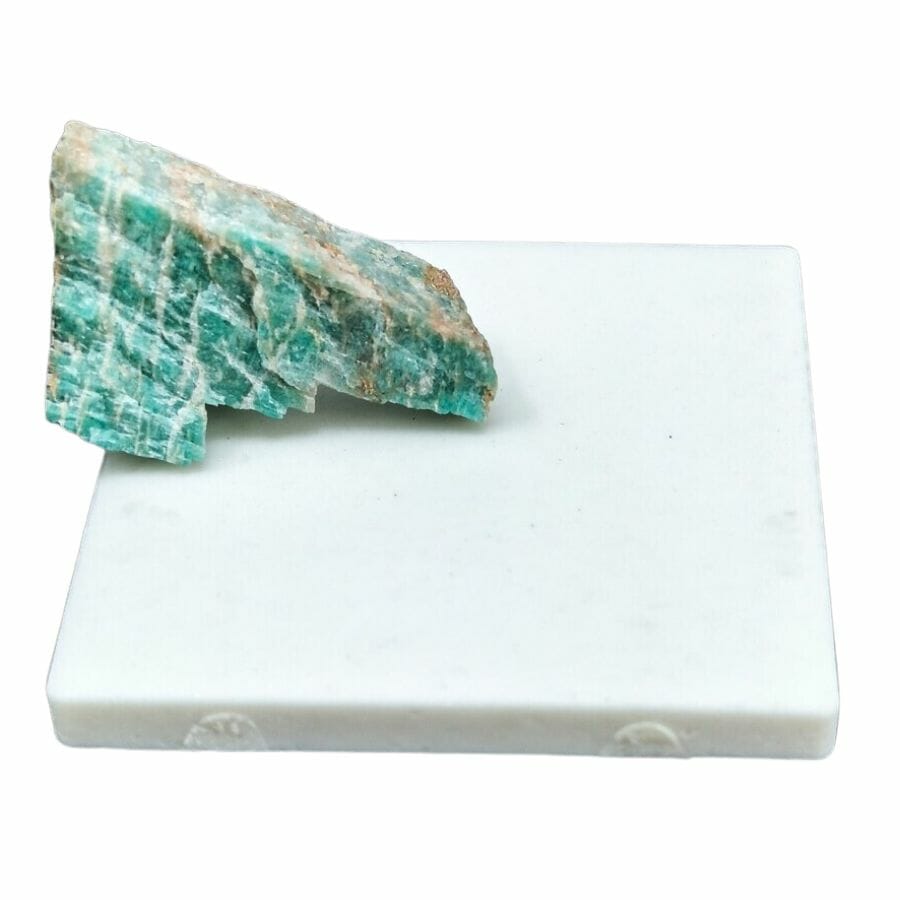
Every rock or mineral leaves a little colored mark, or streak, when you rub it against an unglazed porcelain plate (also known as a streak plate). It’s a lot like dragging a crayon across a piece of paper.
The color of the streak can tell you something super important about your rock or mineral.
Here’s the fascinating part: sometimes, the streak color is very different from the color of the mineral itself. Imagine a black mineral leaving a red streak, or a green one leaving a white streak!
The streak color always stays the same. So if you take two specimens of the same mineral, but in different colors, the streak color will be the same.
Doing a streak test is like discovering a secret message that your rock or mineral is trying to tell you. So, next time you get your hands on a rock or mineral, try to find out its secret streak color. You might be in for a surprise!
Test with acid
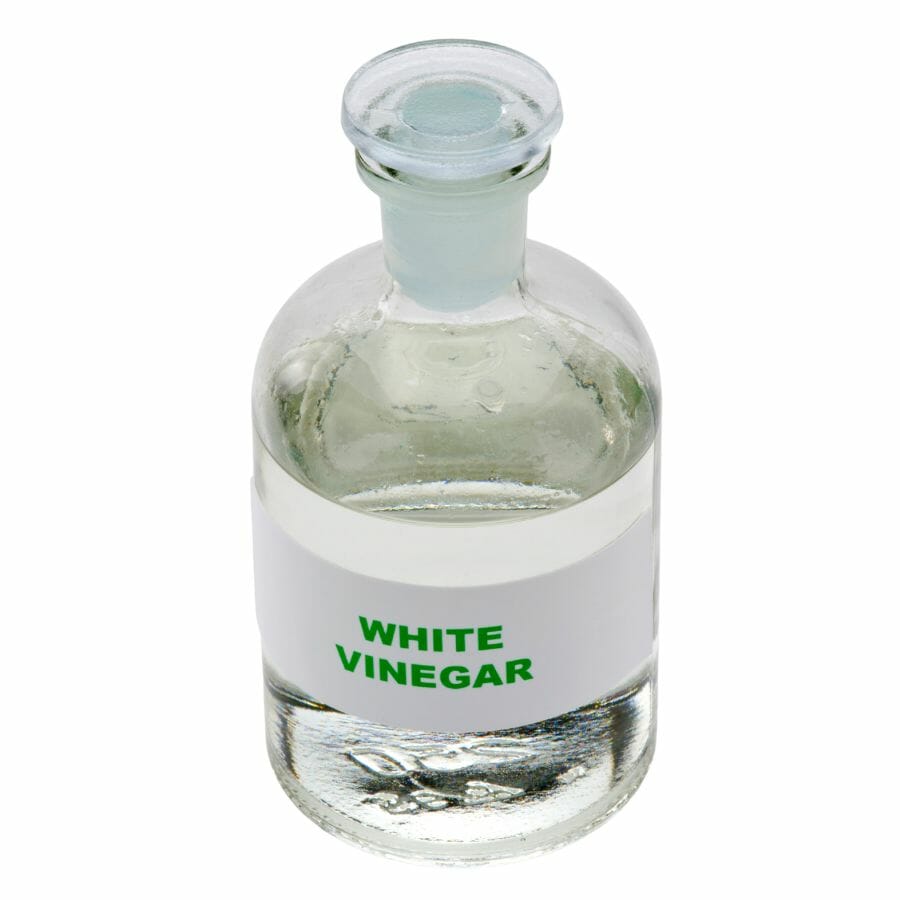
The acid test is an interesting tool for identifying certain rocks and minerals. And it can feel like a little science experiment.
Here’s how it works. Some minerals – not all, but some – will react when they touch acid. You might see tiny bubbles forming almost like a miniature soda! It’s the mineral’s way of telling us it contains something called “carbonate.”
A classic example of this is limestone. If you put a tiny drop of weak acid (like vinegar) on limestone, it starts to fizz and bubble. It’s like the rock is trying to communicate with us.
But remember, not every rock or mineral will do this. Only those with carbonate in them.
Remember to handle acids safely, and always clean up properly afterward. The acid test is a cool trick, but only when done right.
Evaluate the luster
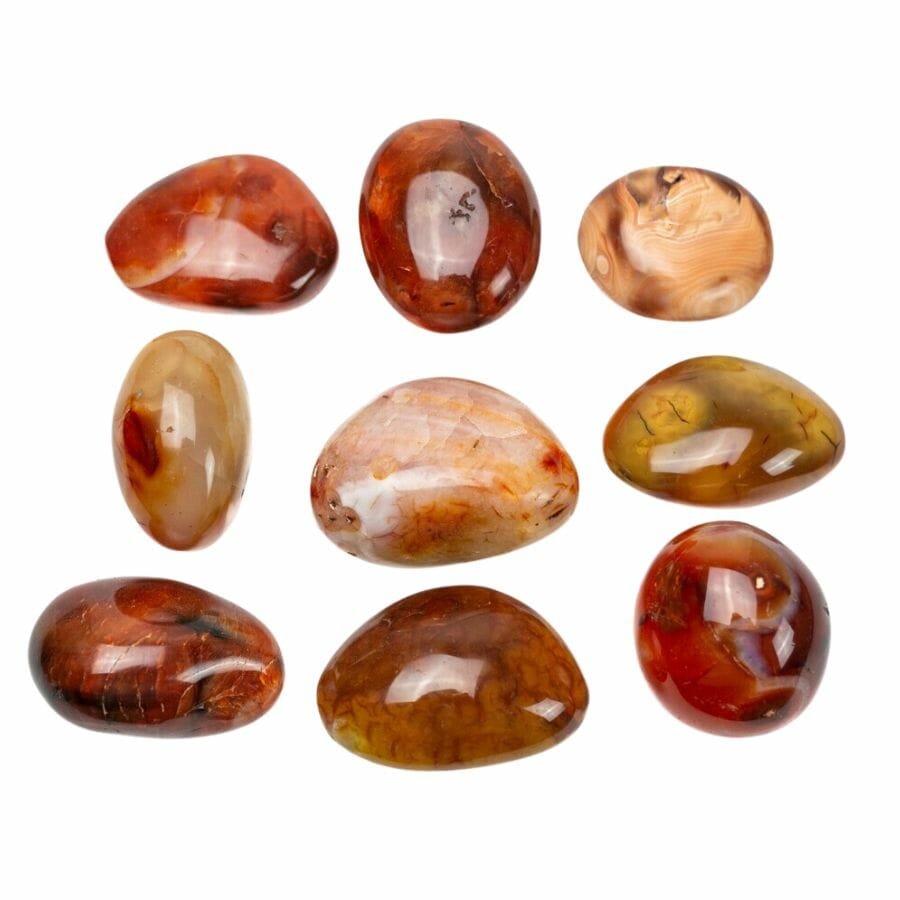
Luster, in simple terms, is the way a rock, mineral, or gem reflects light. When you’re holding a rock under the sun, or a flashlight, pay attention to how the light bounces back.
Does it look shiny like a new penny, or does it have more of a dull shine like a piece of chalk?
The term “metallic” is used for minerals that shine like metal. Gold and pyrite (also known as fool’s gold) have this kind of luster. On the other hand, some minerals have what we call a “non-metallic” luster.
Non-metallic luster is broken down further into types like “vitreous” (glassy), “pearly” (like a pearl), “resinous” (like resin or shiny plastic), and more. Because of these different classifications, luster can help with Washington rock identification.
By looking at a rock or mineral’s luster, you can get one step closer to identifying it. It’s kind of like being a rock detective, and every clue counts! Remember, it’s all about looking closely and taking note of every little detail.

